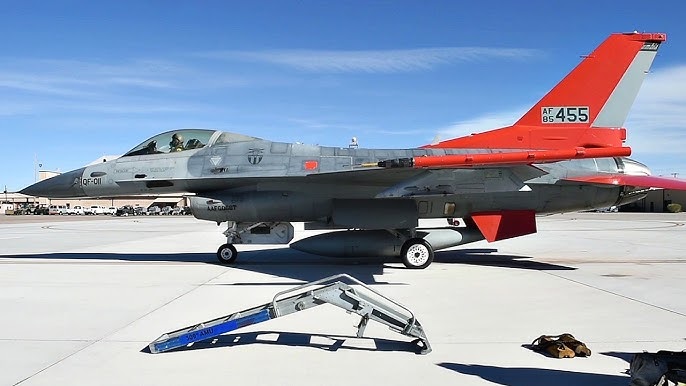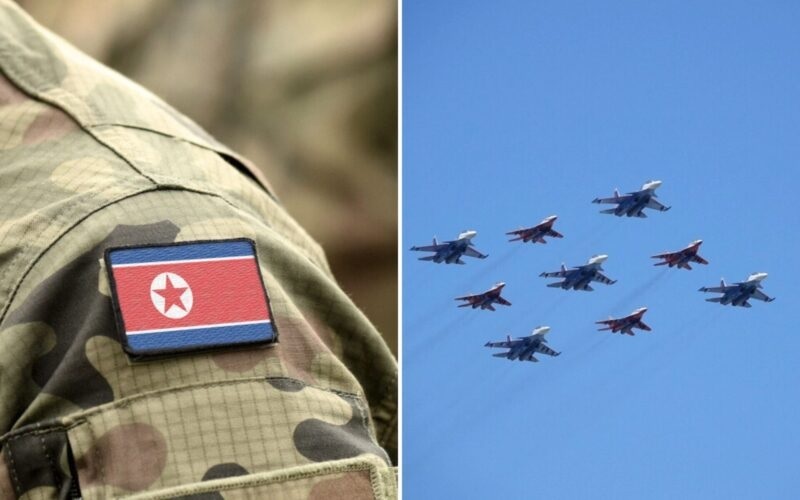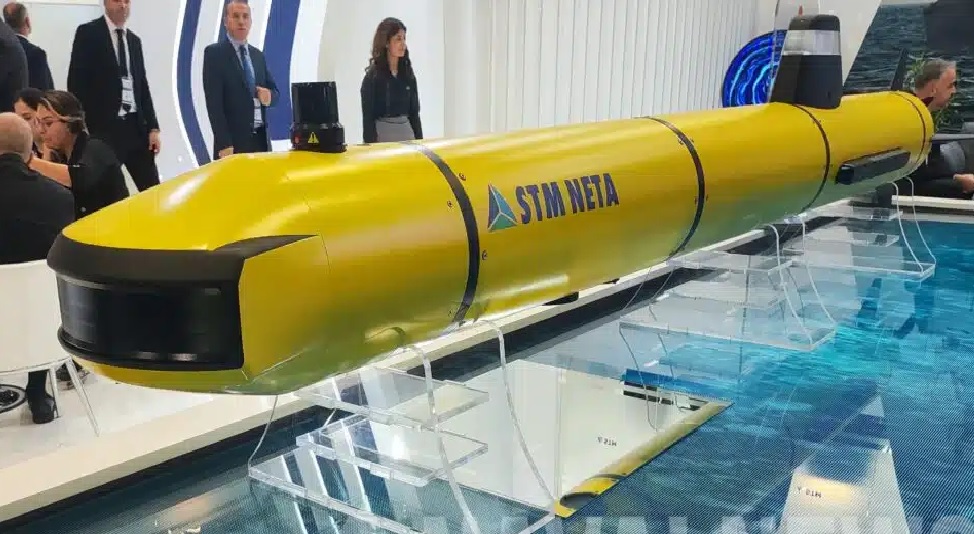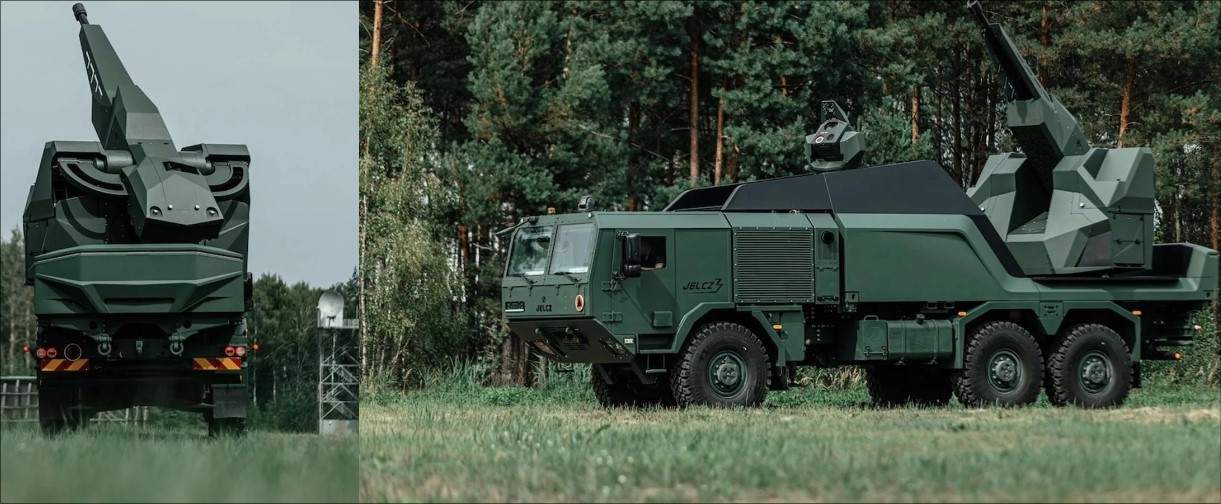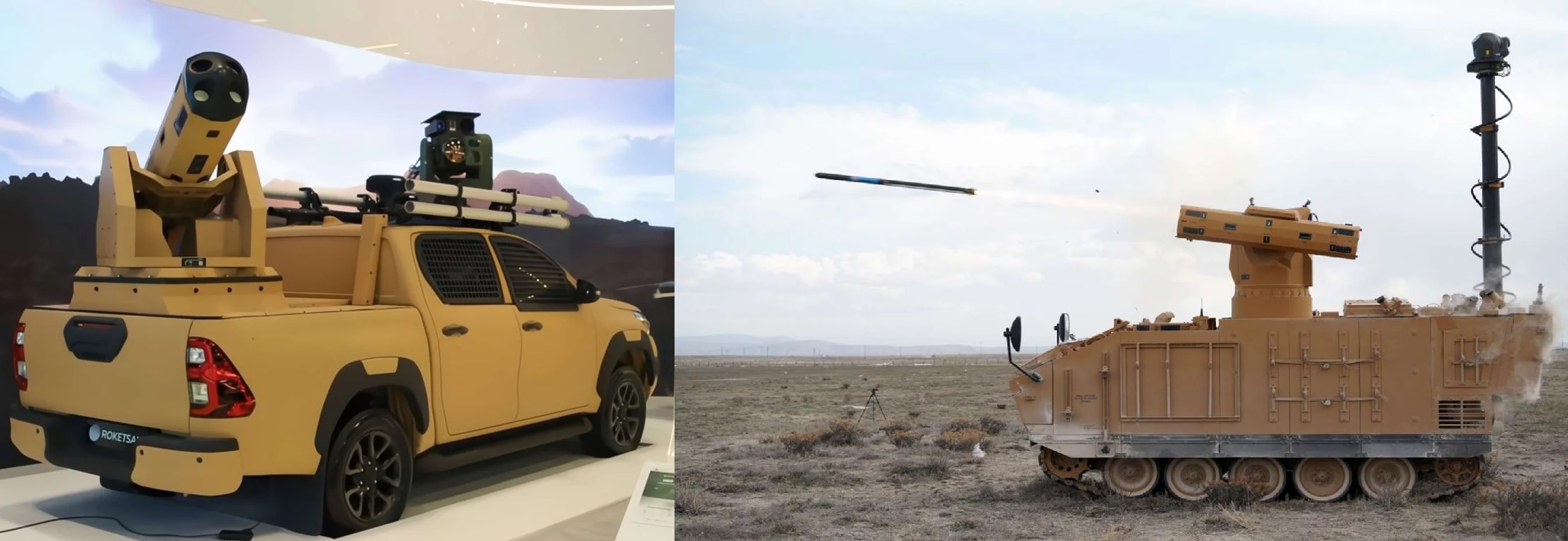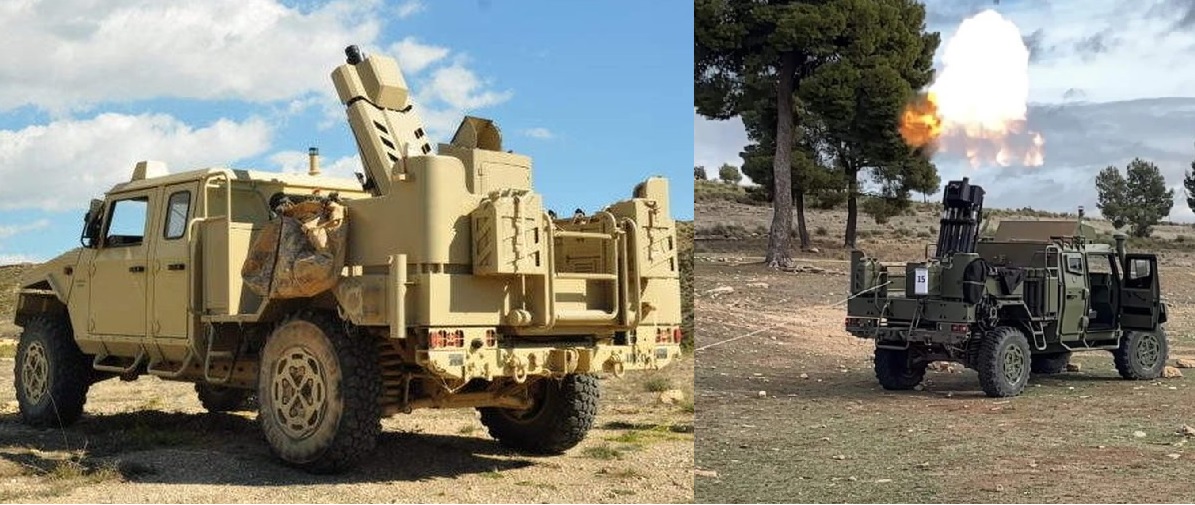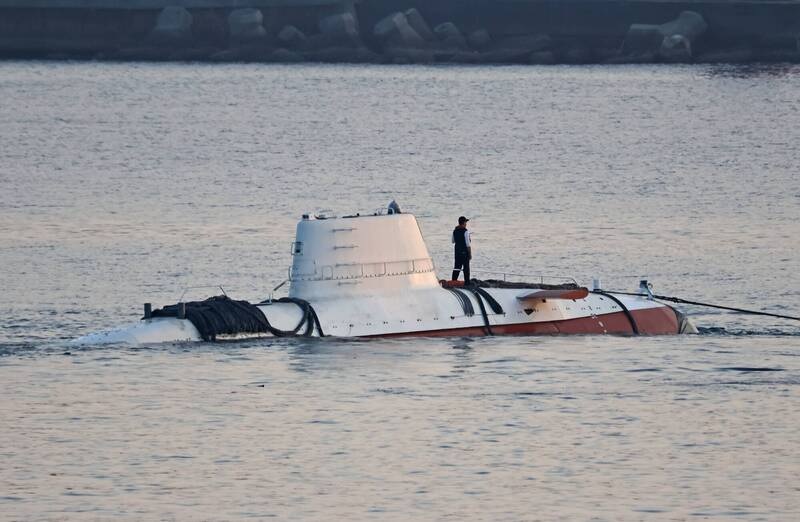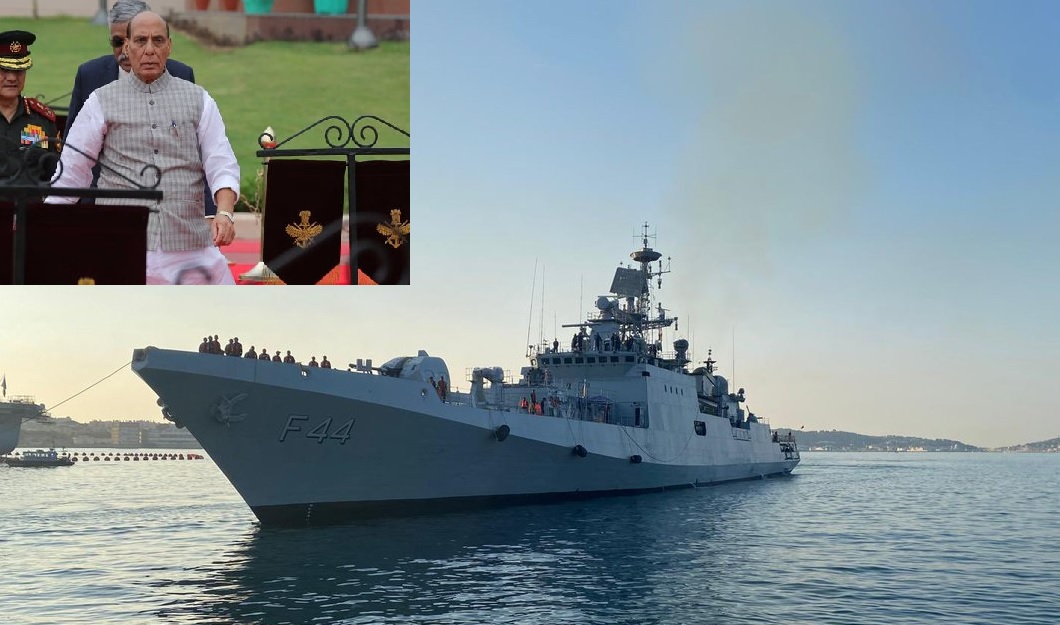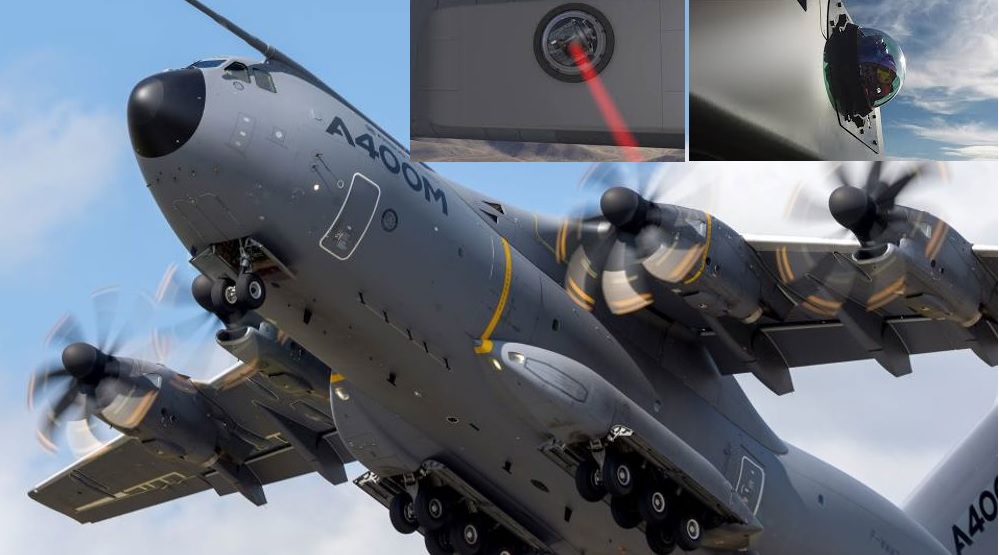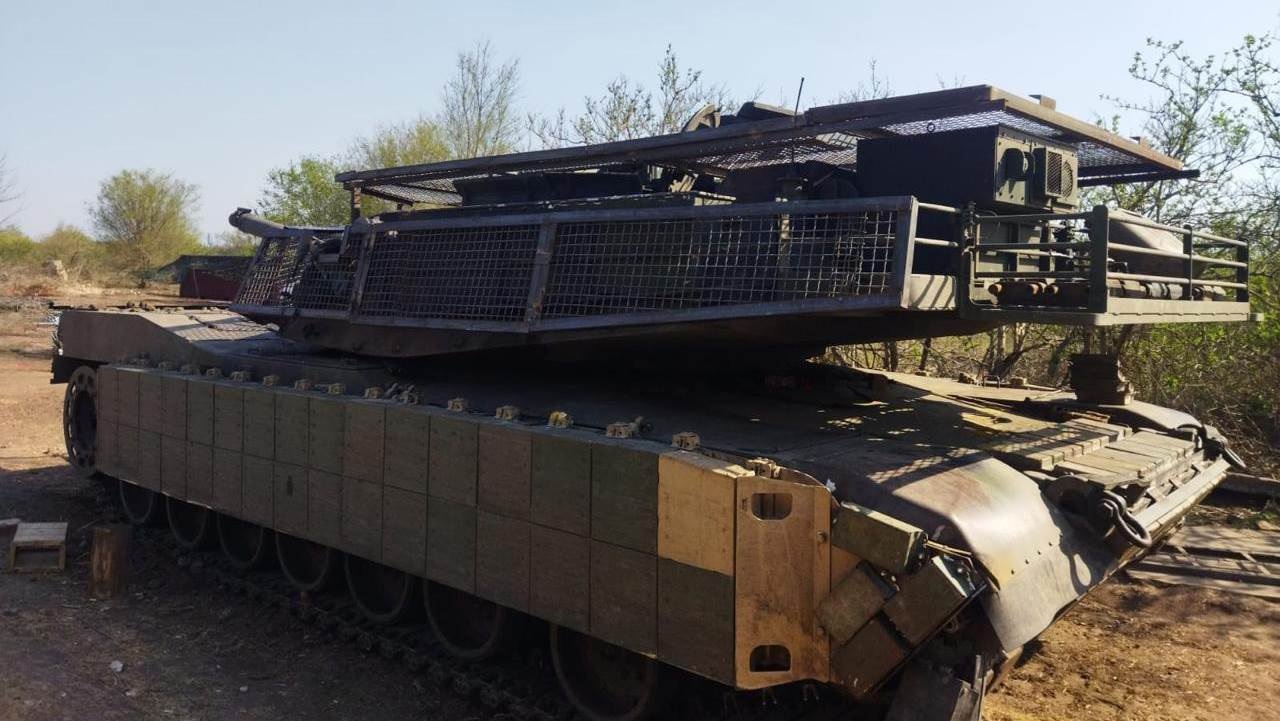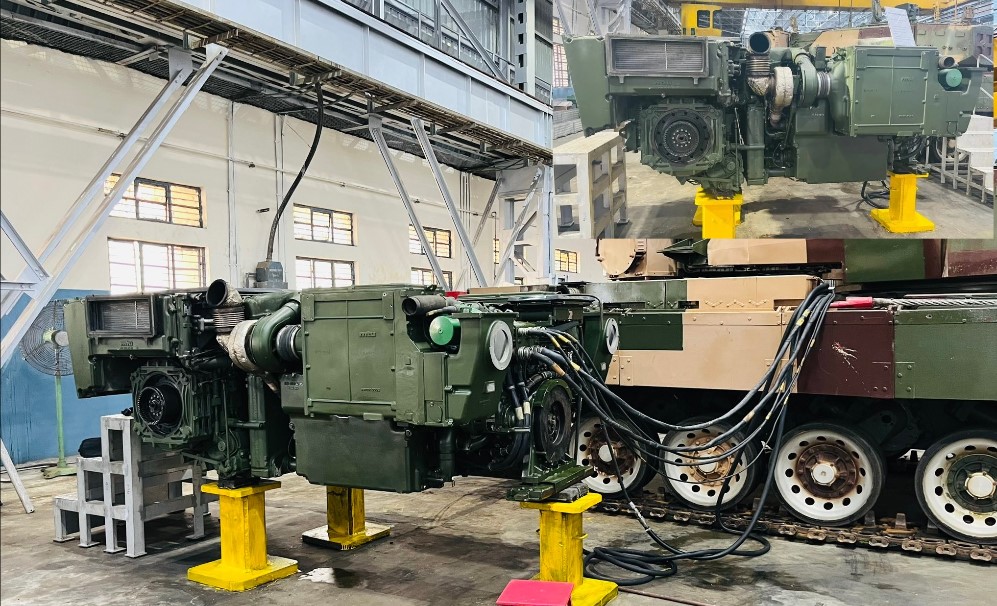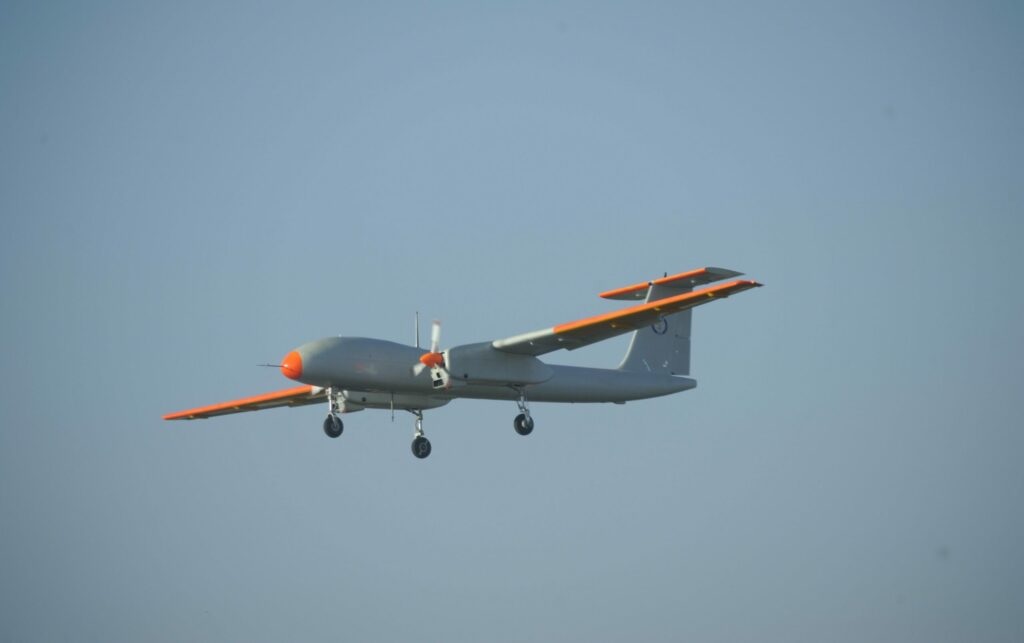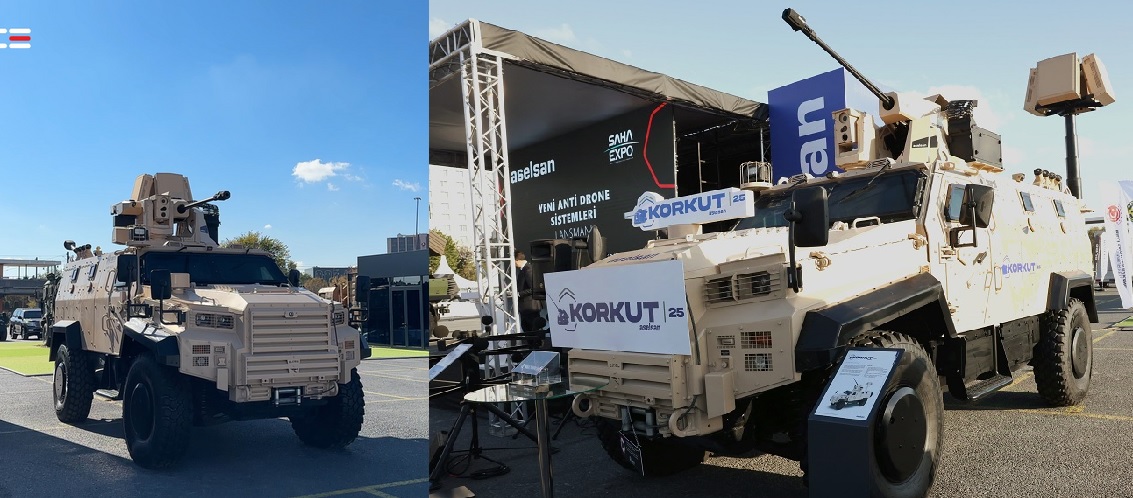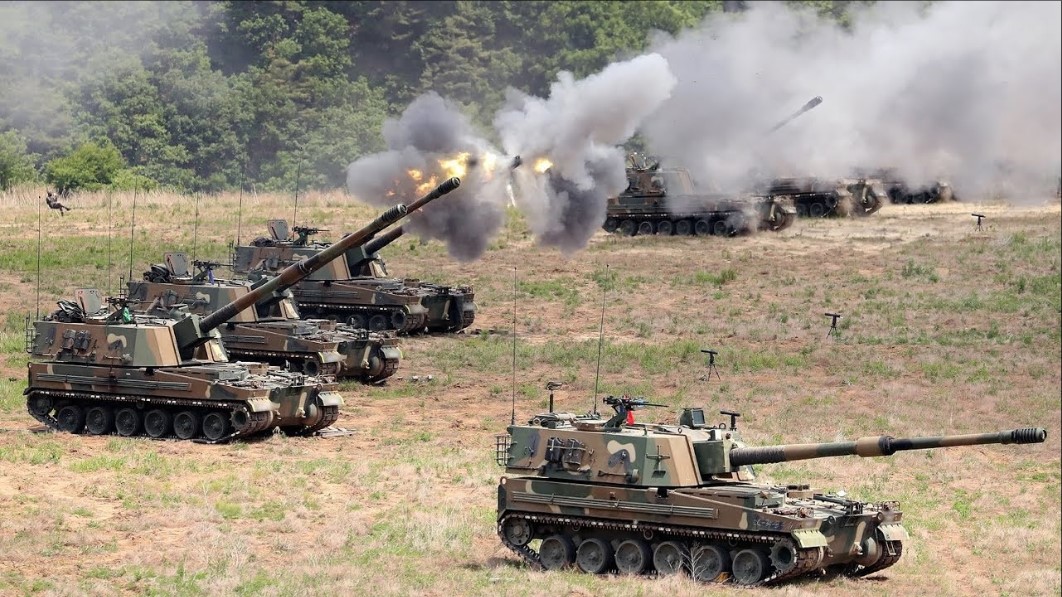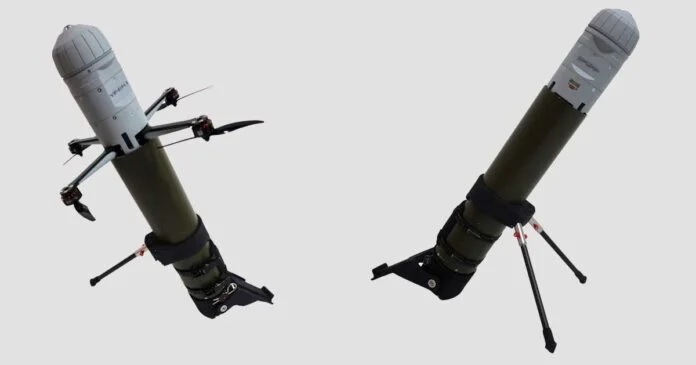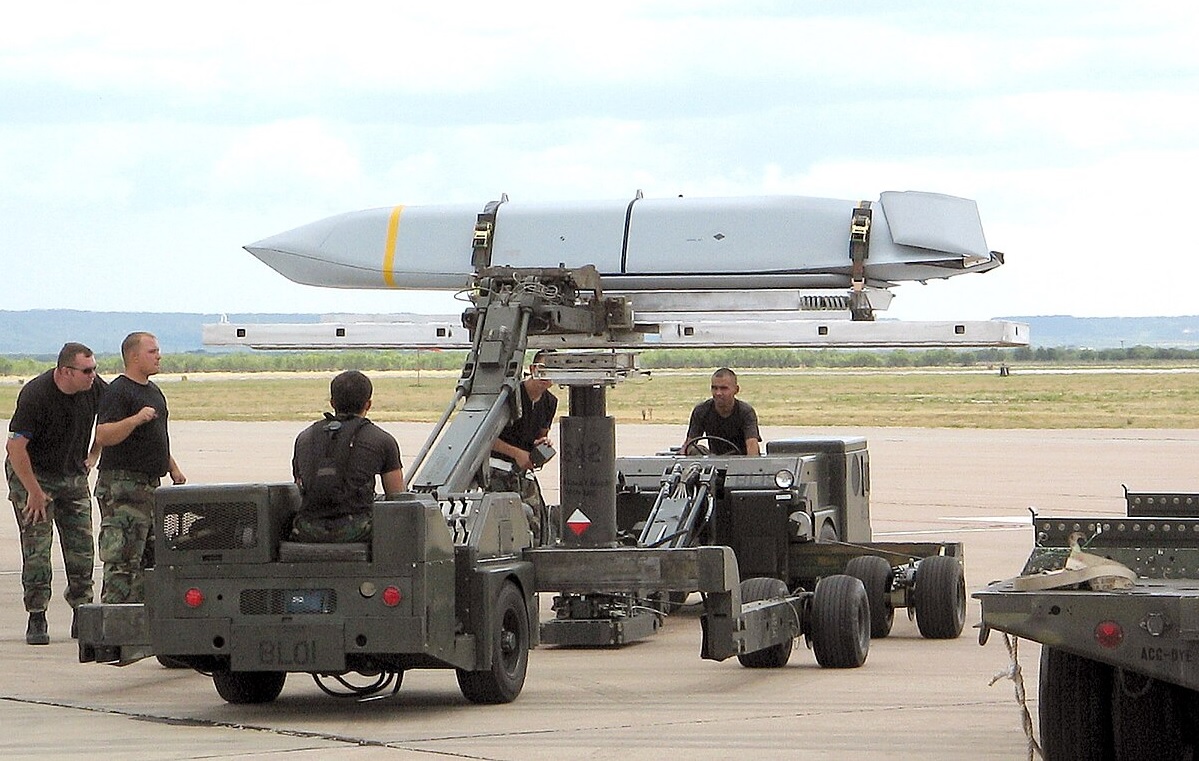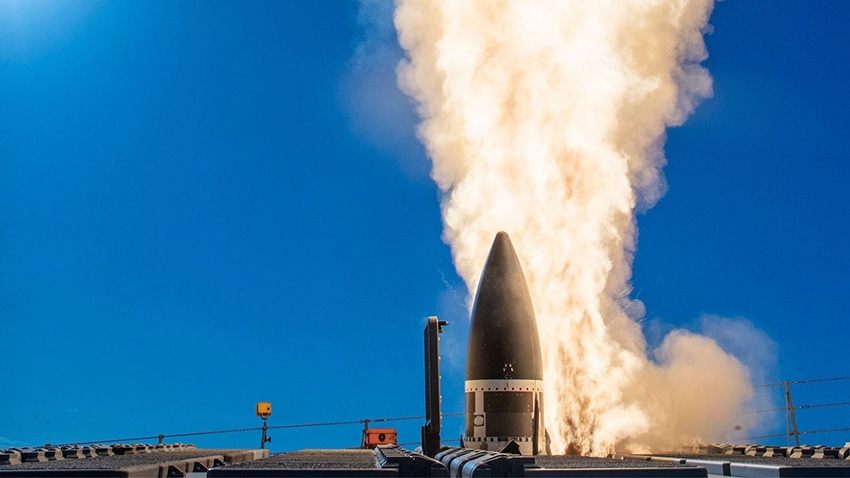World
In a significant move to bolster the defense capabilities of a key NATO ally, the United States has approved a $7.3 billion sale of upgrades for Poland’s fleet of F-16 fighter jets. As Poland shares a long border with Ukraine, which continues to grapple with the effects of the Russian invasion, these enhancements come at a pivotal time. The upgraded jets will not only elevate Poland's air defense capabilities but also reinforce NATO’s overall military strength in Eastern Europe.The sale, which was announced on Wednesday by the Defense Security Cooperation Agency (DSCA), marks a key step in improving the security of Poland, a country playing a crucial role in the geopolitical landscape of Europe. With the war in Ukraine pressing on, Poland’s proximity to the conflict makes it a strategic stronghold, and the F-16 Viper Midlife Upgrade (MLU) will significantly enhance its air force's abilities.Strategic Importance of the UpgradeThe F-16 Viper MLU, a comprehensive modernization program, is aimed at extending the operational life of Poland’s F-16 fleet, ensuring the jets remain cutting-edge for decades to come. The upgrade package includes advanced radar systems, enhanced avionics, modern electronic warfare systems, and sophisticated communications tools. These improvements will allow the Polish F-16s to operate more effectively in multi-domain environments, enhancing their ability to detect, track, and engage air and ground targets.One of the critical components of the upgrade is the installation of the **AN/APG-83 AESA radar**, which brings advanced capabilities such as greater target detection range, precision targeting, and improved resistance to jamming. This radar system has been described as a game-changer for the F-16, giving the jets a technological edge over potential adversaries.Additionally, the upgrade includes improvements in **mission computers, advanced datalink systems**, and **electronic warfare suites** that will enable Poland’s F-16s to better integrate with NATO forces. The enhanced communication capabilities will allow seamless coordination with allied air and ground forces, ensuring faster response times and better situational awareness during joint operations.Strengthening NATO’s Eastern FlankPoland’s role within NATO has grown considerably in recent years, especially in the context of rising tensions with Russia. The F-16 upgrades represent a direct investment in Poland’s military capabilities, allowing the country to better defend its airspace and contribute to NATO’s collective defense. As Russia continues its aggressive posture, Poland’s upgraded air fleet will be a crucial deterrent, adding to the region's security.The DSCA emphasized that the sale "will support the foreign policy goals and national security of the United States by improving the security of a NATO ally." This aligns with the broader strategy of the United States to maintain stability in Europe and strengthen its defense partnerships. As Poland continues to support Ukraine, both diplomatically and militarily, these F-16 upgrades symbolize the deepening defense cooperation between the U.S. and Poland.Congressional Approval and Future ImplicationsThe U.S. State Department has already given its approval for the proposed sale, and the DSCA has provided the necessary notification to Congress. Congressional approval is the final step in the process, and once granted, the upgrades can proceed, with deliveries expected to take place over the next several years.For Poland, this deal represents a major leap forward in its defense modernization efforts. The country has been on a military spending spree in recent years, purchasing advanced weapons systems and expanding its military presence in response to regional threats. The F-16 upgrade program is just one part of Poland’s broader defense strategy, which also includes acquiring cutting-edge missile systems, tanks, and other military hardware.As tensions in Europe remain high, Poland’s F-16 upgrades serve as a reminder of the enduring importance of NATO’s collective defense. For the United States, strengthening allies like Poland is a key component of its strategy to maintain peace and security in the region. This sale also reinforces the U.S. commitment to its European allies, ensuring that NATO remains prepared to confront any emerging threats.In conclusion, the $7.3 billion F-16 upgrade deal is a crucial step for Poland and NATO, reinforcing their defense capabilities in the face of growing uncertainty in Europe. With enhanced radar, communication systems, and electronic warfare capabilities, Poland's air force is set to play an even more pivotal role in regional security.
Read More → Posted on 2024-10-24 15:12:08World
In a move that has raised eyebrows across the international community, North Korean fighter pilots have reportedly been deployed to Russia, marking a significant shift in the nation's military engagement beyond its borders. According to sources within the South Korean government, these pilots were sent to Vladivostok in Russia's Far East in September. This deployment comes just before the expected arrival of North Korean ground troops in early October, signaling a deepening military relationship between Russia and North Korea as both face significant international pressures.A Historical Milestone in Military CooperationThis development is significant, not just because it’s the first foreign deployment of North Korean combat pilots since the Vietnam War, but also because it hints at a broader strategic alignment between Pyongyang and Moscow. North Korean pilots have historically participated in conflicts such as the Yom Kippur War in 1973, where they provided crucial support to Syrian and Egyptian forces. The current deployment may echo those past efforts, but the geopolitical landscape today is far more complex, with the ongoing war in Ukraine and Russia's deteriorating relations with the West.Strategic Gains for Both North Korea and RussiaThe deployment of North Korean pilots could serve several strategic purposes. For Russia, which is heavily involved in the Ukraine conflict, the arrival of these pilots could help ease the pressure on its own air force. Military experts have noted that North Korea’s involvement could increase the frequency of air sorties or even allow Russia to allocate its own pilots to other strategic areas. The use of modern, guided weaponry and long-range systems has simplified many combat operations, reducing the need for highly experienced pilots, making this cooperation more feasible.On the other hand, for North Korea, this deployment may serve as a valuable learning experience. Some analysts believe that North Korean pilots could be training on Russian aircraft, potentially foreshadowing future arms deals between the two nations. North Korea has long sought to modernize its air force, which has been struggling for decades under the weight of international sanctions and economic hardship. The country's current fleet consists of outdated aircraft like the MiG-19, MiG-23, and MiG-29, which have become increasingly difficult to maintain due to a lack of external support.Future Arms Transfers?Speculation is rife that North Korea might be positioning itself to acquire advanced Russian aircraft such as the Sukhoi Su-30 or Su-34, which could significantly enhance its aging air force. This would align with North Korea's broader goal of modernizing its military capabilities, especially in light of its reliance on outdated technology. The last significant acquisitions for the North Korean air force occurred in the late 1980s and early 1990s. Since then, international sanctions have hampered its ability to procure new hardware or conduct proper maintenance.If North Korea were to receive more advanced aircraft from Russia, it could shift the balance of power in the region. A modernized North Korean air force would not only bolster its own military capabilities but also strengthen its strategic alliance with Russia, providing both nations with critical leverage on the global stage.Broader ImplicationsThe growing military ties between Russia and North Korea are a stark reminder of the shifting alliances in the world today. Both nations face heavy sanctions and diplomatic isolation from much of the international community, which may be driving them to strengthen military cooperation. The deployment of North Korean pilots in Russia is just one part of this broader trend. With North Korean ground troops expected to arrive in Russia shortly, the full extent of this collaboration is yet to be seen.This partnership, while beneficial for both nations in the short term, may lead to increased tensions in an already volatile global environment. If North Korea does receive advanced military equipment from Russia, it could embolden Pyongyang in its regional ambitions, particularly in relation to South Korea and Japan.In conclusion, the deployment of North Korean pilots to Russia is a significant event with potential long-term consequences. It signals not only a deepening military partnership but also a possible shift in regional power dynamics. While the specifics of their mission remain unclear, one thing is certain: this development is far more than just a routine military exercise; it represents a strategic maneuver with implications that could resonate well beyond the Korean Peninsula and Russia's borders.
Read More → Posted on 2024-10-23 16:10:13World
STM, one of Türkiye's foremost defense technology companies, has introduced its latest innovation—the STM NETA 300, an Autonomous Unmanned Underwater Vehicle (UUV), at the SAHA EXPO 2024. This cutting-edge platform is a testament to Türkiye's growing capabilities in indigenous defense technologies, and it marks a significant milestone for STM in the underwater domain.The unveiling of STM NETA 300 signifies a deeper commitment to Türkiye's Blue Homeland initiative, which emphasizes the protection of the nation's maritime borders and underwater assets. STM, with a proven track record in both surface and underwater defense platforms, aims to meet both military and civilian needs with this highly versatile UUV. A Technological Marvel: STM NETA 300At its core, the STM NETA 300 is designed with flexibility, autonomy, and modularity in mind. It's a compact vehicle, weighing between 70 and 85 kilograms depending on configuration, which allows it to be easily transported by just two people. The UUV’s design prioritizes ease of deployment and adaptability for various missions, making it suitable for operations in both shallow and deep waters, reaching depths of up to 300 meters. The UUV's propulsion system allows for a top speed of 5 knots and enables it to operate autonomously for up to 24 hours on a single battery charge. This endurance is crucial for extended missions, particularly in Mine Countermeasure (MCM) operations, one of its primary roles. STM NETA 300 comes equipped with advanced sonar technologies, including side-scan sonar and synthetic aperture sonar (SAS), which provide high-resolution imaging and wide-area coverage. This technology is essential for detecting and classifying underwater mines, ensuring that the UUV can navigate hazardous zones efficiently.What sets STM NETA 300 apart is its high degree of autonomy. Once deployed, the vehicle can navigate independently, using pre-programmed mission profiles or real-time commands, to scan, detect, and classify potential threats. This level of automation significantly reduces the risk to human divers and manned vessels.Expanding Capabilities Beyond Military UseAlthough the STM NETA 300 is primarily designed for mine detection, its versatile architecture makes it suitable for a wide range of both military and civilian applications. For military operations, it can conduct surveillance and reconnaissance, anti-submarine warfare, environmental assessments, and even support explosive ordnance disposal missions. Its side-scan sonar and precision navigation systems allow it to generate highly accurate underwater maps, which is vital for detecting targets and identifying underwater wrecks.In civilian applications, the STM NETA 300 shines in fields like geophysical surveys, pipeline inspections, and seabed assessments. It can play a key role in environmental monitoring, offshore renewable energy investigations, and marine archaeology. Its ability to work autonomously for long periods without human intervention also makes it ideal for tasks that require precise and prolonged underwater operations.A Family of UUVs: The Future of STM NETAThe STM NETA 300 is just the beginning. STM General Manager Özgür Güleryüz announced that this is the first member of a broader family of unmanned underwater vehicles. The future NETA series will include medium-sized and larger models capable of operating at even greater depths—up to 1000 meters, as in the case of the planned STM NETA 1000, which was also showcased in mockup form at SAHA EXPO. This upcoming model will take on more critical roles, including anti-submarine warfare and deep-water reconnaissance, further enhancing Türkiye's underwater operational capabilities.Building Export PotentialSTM has also emphasized the NETA family’s potential for export. As Türkiye strengthens its defense industry, exporting advanced technologies like the STM NETA to allied and friendly nations becomes increasingly feasible. With its flexible design and robust capabilities, the STM NETA 300 is positioned to meet a wide variety of operational needs beyond Türkiye’s own military, offering a significant contribution to global maritime security.The unveiling of the STM NETA 300 at SAHA EXPO 2024 represents a bold step for STM and Türkiye's defense sector. With its advanced autonomy, modular design, and ability to perform critical underwater missions, the NETA 300 sets a new standard for unmanned underwater vehicles. As the NETA family grows, STM’s innovative approach will continue to contribute to the security of Türkiye's maritime borders and further expand the country’s influence in the international defense market.
Read More → Posted on 2024-10-23 16:05:50World
At the inaugural International Armament Congress in Kraków, Poland, held in late October 2024, a significant development in air defense technology was introduced by Polish defense company Pit-Radwar: the SA-35MM counter-drone air defense system. This advanced 35mm self-propelled artillery platform aims to bolster Poland's air defense capabilities, especially in the fight against modern aerial threats such as drones, aircraft, and cruise missiles. Its unique combination of programmable ammunition, advanced tracking technology, and high mobility represents a notable step forward in short-range air defense systems.The Power of Programmable AmmunitionAt the heart of the SA-35MM system is its ability to utilize programmable Air Burst Munition (ABM). This feature enables the system to achieve a staggering 97% hit probability with just seven rounds, each containing more than 50 subprojectiles. This efficiency is a major upgrade compared to traditional ammunition types, drastically reducing the number of rounds required to neutralize targets, which is essential for countering fast-moving, small aerial threats like unmanned aerial vehicles (UAVs) or drones.This advanced munition is paired with the AM-35mm automatic cannon, which boasts a high rate of fire of 550 rounds per minute. The cannon's dual-feed ammunition system allows for immediate switching between two types of ammunition: FAPDS-T (Frangible Armour Piercing Discarding Sabot with Tracer) for armored targets and ABM for air targets, providing unparalleled flexibility during combat situations.A Technological Leap in Air DefenseBeyond its impressive firepower, the SA-35MM integrates several state-of-the-art systems that ensure its effectiveness in a range of conditions. The ZGS-35 optoelectronic target-tracking system is equipped with an infrared thermal imaging camera, a daylight camera, a laser rangefinder, and a video tracker. These components provide the system with robust tracking capabilities, allowing it to operate in various weather conditions, day or night, and track fast-moving targets with great precision.Additionally, the TUGA radar, operating on frequency-modulated continuous wave (FMCW) technology in the X-band, offers another layer of capability. This radar is capable of detecting targets, including small drones, at ranges up to 5 kilometers while remaining stealthy to enemy reconnaissance. The radar's detection range extends up to 50 kilometers for larger targets, making the SA-35MM effective across a broad spectrum of threats.Mobility and FlexibilityThe SA-35MM is mounted on a highly mobile third-generation Jelcz 6x6 platform, providing the system with the versatility to operate in various environments. This mobility ensures that the system can be quickly deployed to defend key strategic points or provide protection for moving units in the field.The system also includes a high degree of automation, with remote control capabilities and fast deployment times. It can operate autonomously or be integrated into a broader networked defense system, such as Poland's air defense command. Its flexibility makes it particularly suited for defending against low-cost, small targets like drones, which are increasingly used in modern conflicts.Advanced Collaboration and DevelopmentThe SA-35MM system was developed through a collaborative effort between Pit-Radwar, the Military University of Technology, and Mesko, a Polish defense company. This partnership was made possible by funding from Poland's National Centre for Research and Development (NCBiR). The project aims to deliver nine prototypes integrated with the OSU-35K naval gun system by 2025, a significant milestone in the nation's effort to modernize its military capabilities.During the Congress, live demonstrations of the SA-35MM system further highlighted its precision and reliability. In one such test, the system successfully targeted and destroyed a small drone at a distance of 1,000 meters, showcasing its ability to neutralize difficult-to-hit, low-signature aerial threats.Future ProspectsThe SA-35MM system is designed to integrate seamlessly into Poland's broader air defense strategy, alongside other systems like the Poprad missile system. Pit-Radwar has proposed two configurations for the system: one focused solely on artillery and the other integrating missile systems for an even broader defensive capability.With a growing need for effective defenses against drones and other airborne threats, especially in light of recent global conflicts where drones have played a decisive role, Poland's development of the SA-35MM demonstrates a forward-thinking approach to national defense. The use of programmable ammunition not only increases the system’s effectiveness but also reduces costs by limiting the number of rounds fired.The introduction of the SA-35MM system could mark the beginning of a new era in air defense technology, one where precision, automation, and mobility define the battlefield. With mass production potentially on the horizon and an operational deployment as early as 2026, this system could play a crucial role in safeguarding key facilities and military units against the increasingly sophisticated aerial threats of the modern era. Poland's commitment to defense innovation, as seen through the SA-35MM, positions it at the forefront of NATO allies when it comes to counter-drone technology, potentially setting a new standard for very short-range air defense systems globally.
Read More → Posted on 2024-10-23 15:22:46World
At the SAHA 2024 exhibition, Turkish defense giant Roketsan showcased an intriguing and highly practical development: the integration of its Cirit 70mm laser-guided missile system onto a Toyota Hilux. While the Hilux has long been a staple in conflict zones due to its durability and reliability, this new configuration elevates its status as a low-cost, mobile platform capable of precision firepower. This move is particularly relevant for nations or forces operating under budget constraints but still requiring high-tech capabilities.The Toyota Hilux, often seen in asymmetric warfare scenarios, has a reputation for its robustness and versatility. From Africa to the Middle East, the vehicle has earned a place in the military toolkit for both state actors and non-state groups, making it a widely recognized platform in modern warfare. Now, with Roketsan’s Cirit missile launcher attached, the Hilux is more than just a "technical" vehicle; it becomes a precision strike weapon, capable of taking on a variety of targets, especially in environments where conventional armored vehicles are not viable due to cost or logistical constraints.The Cirit missile itself represents a significant leap in missile technology. It fills the gap between unguided rockets and expensive guided missile systems. Offering precision at a relatively low cost, the Cirit has already seen use on various Turkish military platforms, including helicopters, land vehicles, and unmanned surface vessels. With a range of up to 8 kilometers, the missile is designed for both air-to-ground and ground-to-ground operations, making it an ideal fit for mobile platforms like the Hilux.This particular integration includes several upgrades to the Hilux beyond just a missile launcher. The flatbed of the truck carries a turret outfitted with four Cirit missiles, ready to fire on command. For target acquisition, the system uses Aselsan's Karakurt electro-optical/infrared (EO/IR) sensor, mounted on top of the vehicle’s cabin. This system, complete with a laser designator, allows operators to identify and lock onto targets with a high degree of accuracy, enhancing the missile's strike precision.The Hilux-based platform is designed to be nimble, providing mobility and flexibility on difficult terrain where heavier vehicles may struggle. The vehicle's compact size allows it to be used in hit-and-run tactics or quick deployments in rural or urban environments. The combination of mobility and advanced firepower offers a valuable alternative to more expensive systems, particularly for countries with limited defense budgets or those facing unconventional threats.Roketsan's decision to mount the Cirit missile on a Toyota Hilux points to broader trends in global defense procurement. Similar to the U.S. military’s VAMPIRE system, which enables civilian vehicles to fire laser-guided APKWS II rockets, this setup highlights the increasing popularity of modifying civilian vehicles for military use. These platforms are not only cost-effective but can be deployed rapidly in combat zones without the logistical burden associated with armored vehicles.The Cirit missile itself is available with three different warheads: anti-personnel, high-explosive, and thermobaric. This flexibility in payload makes it suitable for a wide range of missions, from engaging light vehicles to targeting fortified positions. The relatively low cost of the missile, when compared to more advanced anti-tank systems, means that it can be used in a more liberal fashion during combat, providing forces with a greater margin for error.As presented during the SAHA 2024 exhibition, Roketsan’s Cirit-equipped Hilux exemplifies the push toward practical, cost-efficient, and highly mobile military solutions. The system's affordability and effectiveness are expected to appeal to nations and military forces that need adaptable firepower in fast-paced, unconventional warfare environments. Furthermore, this configuration could find particular resonance in regions like Africa and the Middle East, where insurgencies and unconventional warfare demand agile, affordable systems that pack a significant punch.In conclusion, Roketsan's integration of the Cirit missile onto the Toyota Hilux is a forward-thinking approach to modern warfare. By combining the Hilux's proven durability with the precision of Cirit laser-guided missiles, this platform delivers an effective and economical solution for military forces operating in challenging environments. The combination of mobility, precision firepower, and affordability sets this system apart as a practical alternative to more traditional, expensive military vehicles, ensuring its relevance in the conflicts of tomorrow.
Read More → Posted on 2024-10-23 15:14:47World
Rheinmetall has secured a major contract from the Spanish government to provide 81mm Eimos mortar systems, a critical enhancement to Spain's military capabilities. The deal, valued at approximately EUR 150 million, involves the delivery of 84 units, set to take place between late 2024 and 2027. This contract is a significant boost for Rheinmetall, reinforcing its subsidiary Rheinmetall Expal Munitions' position as a trusted partner for the Spanish Armed Forces.The Eimos mortar systems, mounted on light tactical vehicles, will be deployed across the Army, Navy, and Air Force. These systems, which are part of the broader UTEX program initiated by the Spanish Ministry of Defence in 2017, aim to modernize Spain’s mobile artillery capabilities. The Eimos system stands out due to its mobility, quick setup, and precision firepower, making it suitable for both rapid deployment and sustained operations. Each Eimos system features an 81mm mortar integrated with advanced fire control systems, which offer automated ballistic calculations and GPS positioning for enhanced targeting accuracy. The mortar is mounted on a high-mobility vehicle, making it ideal for various terrains. Alongside the hardware, the contract includes maintenance, logistics, and training services to ensure seamless operation within Spain's military structure.This procurement is a part of Spain’s larger modernization efforts to boost its defense infrastructure in response to emerging security challenges in Europe. By investing in Rheinmetall’s state-of-the-art systems, Spain is ensuring its military remains agile, capable, and equipped for future conflicts
Read More → Posted on 2024-10-23 15:11:52World
Recent developments in Taiwan's defense technology have captured significant attention with the revelation of the "Huilong" unmanned underwater vehicle (UUV). Spotted docked in a floating dry dock, the Huilong has taken center stage, especially after images surfaced showing two torpedo launch tubes on its bow. This new evidence suggests that Taiwan’s defense sector is advancing more rapidly than anticipated, particularly in unmanned submarine technologies.For a long time, the Huilong project had been shrouded in mystery. The unmanned submarine, jointly developed by Taiwan's National Chung-Shan Institute of Science and Technology (NCSIST) and Lungteh Shipbuilding, had undergone sea trials before, but its exact specifications remained speculative. However, recent photographs have offered the clearest indication yet of its combat potential, confirming that the Huilong is equipped with torpedo-launching capabilities—potentially transforming the platform from a mere research vessel into a legitimate military asset.Key Specifications of the Huilong UUVThe Huilong UUV is approximately 30 meters in length, with a beam of around 6 meters. Displacing about 100 tons, it’s compact for a submarine, but its agility and capabilities make up for its smaller size. Initially designed as a test platform to validate underwater technologies and to aid in Taiwan's exploration of unmanned naval systems, the Huilong's combat features are a surprising addition.During its earlier sea trials, the bow of the Huilong was notably covered, and the vehicle exhibited an odd floating stance. This led observers to speculate that it wasn’t fully equipped yet. However, during the second trial, the vessel looked more refined, suggesting that its torpedo-launching system had been installed. The recent dry-dock photos show two square-shaped torpedo tubes at the bow, aligned symmetrically. One of these tubes was seen with its hatch open, and nearby were two yellow U-shaped cradles—likely used for loading or testing torpedoes. These features have fueled speculation that the Huilong is not merely for research but potentially geared for defensive or combat roles in the future.The Huilong Project: Taiwan's Ambitious Naval GoalsThe Huilong is the result of a project that began in 2020 as part of Taiwan’s broader goal to increase domestic defense capabilities and marine resource utilization. Officially completed in late 2023, the UUV stands as a testament to Taiwan's growing competence in both military and civilian maritime technologies.While the Huilong's primary designation is to serve as a test bed for scientific and technological experiments, its modular design hints at a far greater potential. Experts believe that the platform could be used for diverse roles, including coastal defense, reconnaissance, and even anti-submarine warfare. The ability to launch torpedoes significantly expands its tactical flexibility, making it more than just a technological demonstration unit.The UUV’s modularity is a key feature, allowing it to be adapted for different missions depending on Taiwan’s evolving defense needs. It also reflects Taiwan’s strategy of integrating civilian and military technologies for dual-use applications, ensuring that the country’s maritime sector grows both technologically and strategically.The Growing Field of Unmanned SubmarinesThe Huilong isn’t the only unmanned submarine making waves in defense circles. Similar projects are taking place globally, as countries rush to develop autonomous systems capable of launching underwater attacks.The KRONOS SUB, for instance, is an Italian unmanned submarine that also boasts torpedo-launching capabilities. Developed by the DRASS Group, it is designed for fully autonomous operations, offering a glimpse into the future of underwater combat.China, too, has entered the race with its UUV-300CD. Like the Huilong, it can carry torpedoes and conduct long-endurance missions autonomously, adding a significant layer of complexity to undersea warfare.These developments highlight the rapid evolution of naval warfare technologies, where unmanned systems could potentially replace manned submarines in certain tactical scenarios. The emergence of torpedo-launching UUVs is especially noteworthy, as it could change the dynamics of naval conflicts, providing countries with stealthy, automated strike capabilities.What’s Next for the Huilong?The Huilong may still be officially classified as a research and test platform, but its recent unveiling suggests that Taiwan could be preparing for more than just technology trials. With its newly confirmed armament capabilities, the Huilong could easily transition into a tactical role in Taiwan's defense strategy.In a region where tensions are high, particularly with China's growing naval presence, unmanned systems like the Huilong will likely play a crucial role in safeguarding Taiwan’s territorial waters. As more details about its capabilities emerge, the Huilong will be watched closely not only by defense analysts but by regional powers looking to assess Taiwan’s growing military edge.In conclusion, Taiwan’s Huilong UUV represents more than just a technological milestone; it’s a symbol of the country’s ingenuity and its efforts to enhance national defense through cutting-edge, autonomous systems. While primarily a research tool for now, the recent revelation of its torpedo-launching capabilities may mark the beginning of a new chapter in unmanned naval warfare.
Read More → Posted on 2024-10-23 15:06:15World
In a crucial step to support Ukraine, the European Parliament approved a significant loan of up to 35 billion euros ($38 billion) on Tuesday. This financial package is part of a broader initiative designed to provide Ukraine with much-needed resources to maintain its war effort and stabilize its economy as it continues to grapple with the devastating impacts of Russia's invasion.The loan, which will be backed by profits from frozen Russian assets, is vital for Kyiv. The Ukrainian government is facing immense financial pressure as it works to keep its economy afloat, rebuild its military, and prepare its infrastructure for the harsh winter months. Russian forces have relentlessly bombarded key sectors, including Ukraine's electricity grid, adding to the urgency of securing funds to repair and protect critical infrastructure. The electricity grid, essential to the nation’s survival during winter, has been a repeated target, forcing the need for quick, substantial financial aid.This latest loan is part of a larger $50 billion initiative that was agreed upon by the G7 countries in June. So far, the European Union has been the first to announce its contribution, stepping forward as a leader in this effort, while the world watches to see how much other G7 members, particularly the United States, will pledge. The EU's loan is a significant part of this plan, but the final amount could decrease depending on contributions from other countries. EU officials anticipate more details from G7 nations, as they convene in Washington later this week to finalize their commitments.At the heart of this financial support is the use of Russian assets frozen by the EU since the invasion began in 2022. Approximately $235 billion of Russia’s central bank funds have been immobilized worldwide, with a substantial portion—around 90 percent—held in Belgium by the international depositary Euroclear. The G7 plan is designed to leverage the interest earned on these frozen assets to increase available funds for Ukraine. This innovative approach would replace an existing EU scheme that sent $1.7 billion to Kyiv earlier this year.However, this new loan plan has faced challenges. The U.S. sought assurances that these frozen Russian assets would remain inaccessible, prolonging discussions. EU members are required to agree every six months to extend the asset freeze, and internal disputes have complicated the process. Hungary, in particular, rejected a proposal to extend the freeze period to 36 months, preferring to wait until after the upcoming U.S. presidential election to finalize any long-term agreements. In the broader context, the EU's commitment to Ukraine is immense. This loan adds to an already staggering 120 billion euros in support that the EU and its member states have provided to Ukraine since the beginning of Russia’s invasion. The newly approved loan represents another layer of financial assistance, underscoring the EU's resolve to stand with Ukraine during this crisis.As Ukraine heads into another challenging winter, the importance of sustained international support is clear. The country's military and economic survival depends on continued assistance from its allies, and the EU's latest loan shows that it remains committed to helping Ukraine weather this storm. How the rest of the G7 responds, particularly the U.S., will be crucial in determining whether Ukraine gets the resources it needs to face an increasingly difficult future.
Read More → Posted on 2024-10-23 14:56:31India
Defence Minister Rajnath Singh is set to visit Russia in early December to commission the INS Tushil, a state-of-the-art stealth frigate that marks a significant milestone in the modernization of the Indian Navy. This visit, initially planned for November, was rescheduled at Moscow's request, underlining the ongoing defence cooperation between India and Russia amid global challenges. The event symbolizes the strong military ties between the two nations as they navigate a complex geopolitical landscape.The INS Tushil is the first of two advanced stealth frigates being built at the Yantar Shipyard in Kaliningrad, Russia. These vessels are part of a $2.5 billion contract signed in 2016 and finalized in 2018, a continuation of the successful collaboration between India and Russia on the Talwar-class frigates. This deal includes the construction of two ships in Russia and two at Goa Shipyard Limited (GSL) in India, with Russian technical assistance.The INS Tushil, based on the Russian Krivak III-class design, is a more advanced version of the earlier Talwar-class frigates, which have long been a core part of the Indian Navy’s fleet. The upgraded frigates boast improved stealth features, making them harder to detect by enemy radar, and have enhanced sensors that allow for superior situational awareness. Additionally, these ships are equipped with sophisticated weaponry systems that significantly enhance their combat capabilities.One of the most notable features of INS Tushil is its integration of BrahMos supersonic cruise missiles. These missiles, developed through an Indo-Russian joint venture, replace the older 3M-54E Klub-N anti-ship missiles previously used in Talwar-class vessels. The inclusion of BrahMos not only increases the offensive range and strike capabilities of the frigate but also cements India's position as a leading military power with access to cutting-edge technology.While the construction of the frigates faced delays due to several factors—including the COVID-19 pandemic, payment issues between India and Russia, and the ongoing Russia-Ukraine conflict—the project has reached its final stages. Around 200 Indian Navy personnel are currently stationed in Russia to supervise the last phase of construction and conduct acceptance trials. These trials are expected to wrap up by mid-September, with the formal commissioning of INS Tushil scheduled for December. The second frigate, INS Tamal, is expected to follow by early next year.The frigates will be powered by M90FR gas turbines, which India has procured from Ukraine. These engines, manufactured by the Ukrainian company Zorya-Mashproekt, highlight the intricate nature of international defence procurement, especially in light of the ongoing conflict between Russia and Ukraine. Despite these challenges, India remains committed to sourcing critical defence technologies that will strengthen its naval fleet.During his visit, Rajnath Singh will also engage in broader discussions with his Russian counterpart to review the ongoing defence cooperation between the two countries. One of the key points of discussion is expected to be the timely delivery of critical defence systems, such as the S-400 missile systems, which have also seen delays due to the global political climate.The commissioning of INS Tushil is more than just a milestone in India’s naval modernization—it symbolizes the enduring partnership between India and Russia in the field of defence technology, even as both countries navigate an increasingly complicated international arena. The addition of this advanced stealth frigate will undoubtedly enhance India’s maritime security and boost its naval strength in the region.
Read More → Posted on 2024-10-23 14:39:08World
In a major leap forward for airborne defense, the British Ministry of Defence (MoD) recently announced that Royal Air Force (RAF) pilots are one step closer to flying with a revolutionary laser self-defense system. This breakthrough technology, developed through a collaborative effort between the MoD and industry partners, successfully completed live-fire trials at Sweden's Vidsel Test Range, according to an official statement released on October 20, 2024. The trials demonstrated the system's ability to neutralize multiple infrared-guided missile threats simultaneously, marking a significant advance in the RAF’s defense capabilities.At the heart of this development is a cutting-edge Directed Infrared Countermeasure (DIRCM) system designed to protect various British military aircraft from heat-seeking missile attacks. The system, a result of the Team Pellonia partnership—which includes Leonardo UK, Thales UK, and the Defence Science and Technology Laboratory (DSTL)—is engineered to rapidly detect and defeat incoming threats. The laser system will be installed on a range of RAF aircraft, including the Shadow R2, an intelligence-gathering aircraft, and the A400M, a large military transporter.What sets this new defense system apart is its unparalleled speed and precision. In less time than it takes to read a single sentence, the technology can detect, track, and neutralize multiple missile threats at once. This speed is critical in modern warfare, where threats from infrared-guided missiles are increasingly sophisticated and harder to counter. The system's rapid response capability ensures the safety of both aircraft and crew, giving RAF pilots a crucial edge in hostile environments.One of the standout features of the system is its dual components: Thales’s Elix-IR threat warning system and Leonardo’s Miysis DIRCM. The Elix-IR uses advanced sensors and algorithms to detect and identify heat-seeking missiles in real-time, filtering out background noise to focus solely on legitimate threats. Once a threat is confirmed, Miysis takes over, using a high-precision laser to "jam" the missile’s tracking system, causing it to lose its lock on the aircraft and veer off course. This sophisticated, UK-engineered solution not only ensures complete operational independence for the British military but also offers substantial export potential for allied countries.The live-fire tests conducted at the Vidsel Test Range attracted significant international interest, with senior military officials from various NATO countries in attendance. The demonstration underscored the growing demand for advanced defensive systems capable of countering increasingly sophisticated missile threats. The presence of these officials hints at potential future collaborations, as the UK positions itself as a global leader in military aerospace technology.The technology’s potential to safeguard aircraft in contested airspaces cannot be overstated. Whether deployed on fast jets, transport aircraft, or smaller intelligence-gathering planes, the system's versatility and efficacy make it a game-changer in modern military operations. By detecting missile threats early and neutralizing them before they can reach their target, this laser defense system offers unprecedented protection for British military aircraft operating in high-risk zones.The Elix-IR and Miysis systems are designed to function in challenging operational environments. The Elix-IR, with its sophisticated filtering algorithms, minimizes the risk of false alarms, ensuring that only real threats are engaged. Once a missile is detected, Miysis' jamming laser disrupts the missile’s guidance system, effectively blinding it and preventing it from reaching the aircraft. This capability is particularly crucial as infrared-guided missiles continue to evolve, making traditional countermeasures less effective.In terms of specifications, the Elix-IR is designed to detect missile launches from distances far enough to provide the aircraft crew with precious seconds to react. This early detection window is vital for allowing the Miysis system to engage multiple missile threats simultaneously. The Miysis DIRCM, on the other hand, is a lightweight, compact system that uses less power than older technologies, making it suitable for a wide variety of aircraft, from large transporters to nimble helicopters.With its 100% success rate during live-fire trials, this laser-based system represents a major milestone in the UK's defense technology. It not only enhances the safety of RAF pilots but also strengthens the UK's position in the global defense industry. The system's success could lead to future export opportunities, benefiting both the UK’s economy and its international defense partnerships.As threats to military aircraft become more advanced, the need for equally sophisticated defense systems is critical. This new laser defense technology, with its rapid response and precision targeting, marks a significant advancement in airborne defense, ensuring the RAF remains equipped to handle the challenges of modern warfare.The integration of this system into a wider range of British aircraft will likely follow in the coming years, cementing the UK’s role as a key innovator in military defense technologies. The combination of British engineering and cutting-edge technology positions the RAF to face future threats with unparalleled confidence.
Read More → Posted on 2024-10-23 14:26:04World
As tensions between Taiwan and China continue to escalate, Taiwan’s Defense Minister Wellington Koo issued a stark warning, emphasizing the global repercussions of any potential conflict. In a statement reported by Taiwan News, Koo made it clear that a Chinese blockade of Taiwan would be considered an act of war, carrying significant consequences not just for Taiwan but for global trade as well.This warning comes amid China's recent "Joint Sword-2024B" military exercises, during which Chinese forces simulated blockades of Taiwan’s key ports and targeted both maritime and ground locations. These drills have heightened concerns within Taiwan and the international community, as blockading Taiwan would severely disrupt global shipping and trade. Koo noted that one-fifth of the world’s freight, valued at approximately NT$78.57 trillion (USD 2.45 trillion), passes through the Taiwan Strait. This vital waterway is a lifeline for global trade, and any prolonged disruption could have catastrophic effects on international supply chains, especially in industries that depend on just-in-time deliveries.Koo was careful to draw a distinction between military exercises and what would constitute an actual blockade. While the Chinese drills did not establish official no-fly or no-sail zones, Koo explained that a full blockade under international law would prevent all ships and aircraft from entering the region. “If a blockade is implemented, as defined by international law, it would involve preventing all aircraft and ships from entering the area,” Koo said. He went on to note that under United Nations resolutions, such an action is tantamount to war. This warning highlighted that China’s exercises, though technically not a blockade, are an alarming escalation.The potential for conflict is not just a regional concern. Koo pointed out that the international community cannot afford to "simply stand by and observe." A blockade would ripple through the global economy, affecting industries from electronics to agriculture. The Taiwan Strait is a critical passage for energy supplies and goods, and any disruption could send shockwaves through global markets, driving up costs for raw materials and consumer goods alike.In the Taiwanese Legislative Yuan's Foreign and National Defense Committee, the conversation has turned toward China's evolving strategies, including grey zone tactics and what some officials have dubbed the "python strategy." These strategies aim to gradually squeeze Taiwan, cutting off essential resources and slowly isolating the island without provoking a full-scale war. However, as Koo underscored, even such strategies pose a grave threat to Taiwan's security and the international community’s stability.In response to the looming threat, Taiwan’s government is taking proactive measures. On Tuesday, Taiwan's agriculture ministry unveiled a wartime food plan, indicating that it has secured rice stockpiles sufficient for over three months. This move is part of a broader strategy to ensure that Taiwan can endure a prolonged blockade or attack. The plan includes organizing food supplies nationwide, securing critical resources like energy and medical supplies, and ensuring infrastructure resilience in the face of potential conflict.Koo also emphasized the growing threat of cyber warfare, noting that Taiwan is subjected to daily cyber attacks. Strengthening information security defenses has become an urgent priority for the Taiwanese government, as cyber attacks could severely cripple essential services in the event of a military blockade or attack.The historical context behind these tensions is crucial. Since 1949, Taiwan has operated as a self-governing entity, but China continues to view the island as part of its territory, vowing to reunite it with the mainland by force if necessary. The ongoing military drills are a manifestation of this claim, as Beijing seeks to send a clear message to both Taiwan and its international supporters.Earlier this week, Taiwan's President Lai Ching-te reassured the public of the government's commitment to safeguarding Taiwan’s democracy and national security. Following a high-level national security meeting, Lai addressed the growing concerns surrounding China’s military exercises, which the Chinese People's Liberation Army (PLA) described as a “stern warning” to supporters of Taiwanese independence.As Taiwan braces for potential escalations, Koo’s warnings serve as a sobering reminder of the broader risks at play. The island's strategic location and its role in global trade mean that any conflict with China could trigger economic and political instability on an international scale. With tensions simmering, the global community faces the difficult challenge of balancing diplomatic pressure on China while ensuring that Taiwan remains safe from aggression. The question that looms large is whether these military exercises are a precursor to something more serious. If the situation escalates, the world may be forced to grapple with the fallout of a conflict that reaches far beyond the shores of Taiwan.
Read More → Posted on 2024-10-23 14:19:02World
As the war in Ukraine continues, innovative solutions are being rolled out to strengthen the country's defense capabilities, particularly in protecting ground-based military vehicles. One notable development is the integration of steel anti-drone shields into Ukraine's Leopard main battle tanks. The shields, which are designed to mitigate the growing threat from drone attacks, are being supplied and fitted by the private paramilitary support group Steel Front. These shields aren't just a random addition. They are purpose-built to combat the increasing danger posed by first-person view (FPV) drones, a type of unmanned aerial system (UAS) that has proven effective in Russia's offensive since the invasion began in 2022. FPV drones allow the operator to control them via video feed, typically using headgear-mounted displays, which enable precise maneuvering. These drones can be deployed for surveillance, kamikaze-style strikes, or other types of damage-inducing missions aimed at taking down vehicles like tanks.The steel screens being installed are no small piece of armor. Weighing around 430 kilograms, these grid-style structures have been specially designed to be mounted on Leopard tanks and other Ukrainian military vehicles. Produced by the Ukrainian mining and metals conglomerate Metinvest, the screens are offered free of charge by the company in support of Ukraine’s military efforts. Despite their significant size and weight, these shields cost roughly $20,000 each—an investment that’s less than 0.03% of the value of a Leopard main battle tank. This affordability, combined with their protective benefits, makes them a practical addition to Ukraine’s frontline defenses.Steel Front’s anti-drone shields have already been fitted on a variety of vehicles in Ukraine's arsenal, including the Soviet-era T-64 and T-72 tanks, as well as the American-made M1 Abrams and Bradley Infantry Fighting Vehicles. With hundreds of these shields now available at various repair bases, crews are able to equip vehicles for the battlefield in about 12 hours, with the help of a 10 to 12-person team. This swift preparation is crucial, given the ever-present threat from drone attacks.The aim of these steel grids is to provide extra protection to the vehicles while ensuring that their performance, crew safety, and maneuverability are not compromised. Olexander Myronenko, Chief Operating Officer of Metinvest Group, emphasized this point, explaining that the shields are designed in such a way that they don’t hinder the functionality of the equipment. He noted that using protective measures that negatively impact vehicle performance would be "unjustified and unnecessary." In fact, there is already evidence that the screens have significantly improved vehicle survivability. Myronenko shared stories from soldiers on the frontlines, stating that the screens have increased the survivability of vehicles by 30-40%. There have been cases where vehicles hit by drones or other attacks were shielded by these screens, allowing the crews to escape unharmed. In some instances, the vehicles themselves were later recovered and repaired for further use, thanks to the effectiveness of the steel screens.This effort by Steel Front to protect Ukraine's military equipment is part of a broader partnership with Metinvest, a company owned by the prominent Ukrainian businessman Rinat Akhmetov. Metinvest has been involved in various defense projects since the start of the conflict. Earlier this year, they produced decoy weapons resembling powerful howitzers, tricking Russian forces into wasting their ammunition on these replicas. Additionally, Metinvest developed counter-unmanned aerial systems (C-UAS) for Kyiv’s Bradley fighting vehicles and even supplied tactical boats to Ukrainian forces.The contribution of Metinvest to Ukraine's war effort is far-reaching, with their involvement extending beyond just supplying military equipment. In September 2024, the company helped inaugurate an underground medical center assembled for the Ukrainian military, aimed at providing critical care for soldiers during the ongoing conflict.The integration of steel anti-drone shields on Ukrainian tanks like the Leopard showcases the adaptability and resourcefulness of the Ukrainian defense sector. These efforts, spearheaded by Steel Front and Metinvest, are helping Ukraine protect its military assets from increasingly sophisticated drone threats, bolstering the nation's overall warfighting capabilities.This forward-thinking approach to defense, where heavy vehicles are equipped with cutting-edge protective solutions, highlights how Ukraine is evolving to meet the challenges posed by modern warfare. As drone technology continues to develop, so too must the defensive strategies that counter it—and Ukraine is clearly leading the way in this regard.
Read More → Posted on 2024-10-23 14:12:47India
In a significant leap for India's defense industry, BEML Limited, a leading manufacturer of military equipment, has secured a contract to design and supply 20 Datran 1500hp engines for the country’s Main Battle Tanks (MBTs). This development is a notable stride in India’s push for self-reliance in defense technology, showcasing its capability to produce state-of-the-art propulsion systems for military use.The Datran 1500hp engine is not just another piece of equipment but a vital component poised to transform India's armored forces. Built with advanced technology, the engine promises to enhance the performance of MBTs, providing them with superior power, maneuverability, and durability—qualities essential for modern battlefield demands. This new engine will not only power the older Arjun prototypes during initial testing but will also serve as a critical element in the Future Ready Combat Vehicle (FRCV) program, setting a new benchmark for military propulsion.The Power Behind the Datran EngineThe Datran 1500hp engine stands out for its cutting-edge features designed to meet the rigorous demands of combat operations. With its 1500-horsepower output, the engine offers a high power-to-weight ratio, enabling tanks to accelerate faster, tackle difficult terrain with ease, and outmaneuver opponents. The engine's robust design is tailored for Indian terrain, from the high-altitude conditions of up to 5000 meters to the extreme heat and sandstorms of desert regions. It can operate efficiently in temperatures ranging from -40°C to +55°C, ensuring that India's tanks remain operational in diverse environments.One of the standout features of the Datran engine is its Electronic Control System, which incorporates Common Rail Direct Injection (CRDi) technology. CRDi ensures precise fuel injection, optimizing performance while improving fuel efficiency. This system also reduces emissions, making the engine not only powerful but environmentally friendly—an essential feature for modern military engines.The Electronic Warning Control system adds another layer of reliability, continuously monitoring the engine’s performance and sending alerts in case of any malfunction. This proactive feature minimizes the risk of sudden breakdowns in the field, ensuring that the tanks remain combat-ready with minimal downtime for repairs.Another impressive feature is the engine’s self-cleaning air filters, which are particularly beneficial for operations in dusty or debris-laden environments, such as deserts. These filters prevent clogging, reducing the need for frequent maintenance and ensuring smooth engine performance during extended missions.A Strategic Milestone for India’s Military FutureBEML’s project is part of a broader government effort to boost domestic defense manufacturing under the 'Make in India' initiative. The project to develop the Datran engines began in 2020, and BEML is expected to complete it by mid-2025, with these 20 engines serving as the testing ground for future deployments.Earlier this year, in March 2024, Defence Secretary Giridhar Aramane attended the maiden test-firing of the 1500hp engine at BEML's Engine Division in Mysuru, where he called it a "transformative moment" for India’s defense capabilities. This test marked a major milestone in the journey to equip India’s military with homegrown technology that is competitive on the global stage.These engines are not just for immediate use but form the foundation for future innovation. The Datran 1500hp engine, with its reliability and advanced technology, is expected to be a key player in India's Future Ready Combat Vehicle program, which aims to create the next generation of MBTs for the Indian Army. This strategic program is designed to modernize the country’s armored forces, enabling them to remain a formidable force in both regional and global military theaters.With testing underway and production expected to conclude by 2025, the successful deployment of these engines will mark a significant advancement for India's defense sector. The Datran 1500hp engine is more than just an engine—it’s a symbol of India’s growing technological prowess in defense and its commitment to becoming self-sufficient in critical military technologies.As India continues its march towards military modernization, the introduction of the Datran engines could revolutionize the operational capabilities of its Main Battle Tanks, ensuring that they are well-prepared for the complexities of modern warfare.
Read More → Posted on 2024-10-23 14:09:33India
In a statement reflecting India's ongoing quest for self-reliance in defense technology, Vice Admiral Krishna Swaminathan, Vice Chief of the Indian Navy, emphasized that the US-made MQ-9B Reaper is better equipped to meet the Navy’s long-range surveillance needs than the domestically developed TAPAS UAV. His comments, delivered at the Navy's ‘Swavlamban’ seminar on innovation and indigenization, highlight both the progress and limitations of India’s indigenous defense industry, particularly in the context of maritime security.The MQ-9B Reaper, designed by General Atomics, is renowned for its endurance and long-range capabilities. It can fly for over 40 hours, with a range that extends beyond 6,000 nautical miles. This kind of sustained operational capacity is vital for the Indian Navy, which must monitor expansive regions of the Indian Ocean, a zone of increasing geopolitical interest given China's growing naval presence. The MQ-9B is equipped with advanced surveillance systems, including synthetic aperture radar, maritime radar, and electro-optical infrared sensors, allowing it to identify and track threats across both sea and land.In contrast, the TAPAS (Tactical Airborne Platform for Aerial Surveillance) UAV, developed by India’s DRDO (Defence Research and Development Organisation), has yet to meet the Navy’s expectations. Vice Admiral Swaminathan acknowledged that TAPAS has some good capabilities but said, "The TAPAS drones in their current form do not entirely meet our requirements.” Specifically, he pointed to its inability to maintain surveillance over wide areas for extended periods, a crucial factor in maritime defense operations.This comes just after a landmark $4 billion deal between India and the United States, under which India will procure 31 MQ-9B Reapers. Of these, 15 units will be assigned to the Indian Navy, while the remaining 16 will be divided between the Army and the Air Force. These drones are expected to significantly enhance India’s reconnaissance capabilities, particularly in monitoring adversarial movements in the Indian Ocean Region, where Chinese activity has been steadily rising.While the TAPAS program was seen as a major step forward in India's drive for indigenization, the platform still needs further refinement. The Vice Chief noted that for TAPAS to be fully operational in a combat-ready environment, multiple versions and variants would be required. "We hope the next version of TAPAS will be much better," Swaminathan remarked optimistically, adding that the Navy is committed to working closely with DRDO to improve the UAV’s performance. He indicated that the Navy would continue providing feedback, helping to drive the platform closer to its full potential.The Vice Chief’s candid assessment points to the broader challenge of balancing India’s strategic goal of self-reliance in defense manufacturing with the immediate need to secure its maritime borders. While there is hope that future iterations of TAPAS will close the gap between Indian innovation and international standards, the immediate need for a robust surveillance solution has made the MQ-9B Reaper an attractive choice. These drones are proven, battle-tested, and provide a level of sophistication that the Navy needs to address contemporary threats.Moreover, the MQ-9B’s integration into the Navy’s operations comes at a time when maritime security is increasingly central to India’s defense strategy. The ability to maintain long-term surveillance in the vast Indian Ocean is essential for keeping an eye on not only Chinese movements but also other security concerns, such as piracy and illegal fishing. The Reaper’s endurance, combined with its sensor suite, makes it the superior choice for such missions at present.Vice Admiral Swaminathan’s comments reflect the Navy’s pragmatic approach to its operational needs. Although India is eager to develop homegrown defense technologies, the Navy cannot afford to compromise its capabilities while waiting for platforms like TAPAS to catch up. With MQ-9B Reapers soon joining the fleet, India is taking a significant step forward in bolstering its maritime surveillance capacity, ensuring that it can meet current challenges while continuing to support the development of indigenous alternatives for the future.
Read More → Posted on 2024-10-23 14:02:51World
At SAHA EXPO 2024, Türkiye’s largest defence and aerospace event, ASELSAN, the nation’s foremost defence electronics company, took center stage with the launch of its latest anti-drone technologies. The new systems showcased at the event underline ASELSAN's commitment to tackling the evolving threat of unmanned aerial vehicles (UAVs) on the modern battlefield. The company introduced several cutting-edge systems, including the KORKUT 25 mm remote-controlled weapon, the BUKALEMUN GNSS spoofing system, the KANGAL-FPV jamming system, and the SEDA 100-cUAV acoustic detection system. Each of these innovations is designed to elevate counter-drone operations, which are becoming an essential part of military strategies globally.Among the highlights is the KORKUT 25 mm remote-controlled weapon system, which stands out for its versatility and firepower. This unmanned turret is engineered to target both ground-based armored vehicles and mini-micro UAVs, providing a flexible and mobile countermeasure. Its integration across different military platforms—from 4x4 to 8x8 vehicles—makes it a highly adaptable solution for diverse operational needs. What makes KORKUT truly formidable is its use of 25 mm airburst ammunition, giving it the ability to take down drones effectively, especially in complex rural or urban environments. The system is further enhanced with a sophisticated array of sensors, including radar and surveillance cameras, which feed into an advanced automatic ballistic calculation system for precision targeting. It also features gyro-stabilization, day and night vision capabilities, and a laser range finder for pinpoint accuracy.One of ASELSAN’s groundbreaking solutions in the electronic warfare space is the BUKALEMUN GNSS spoofing system, which exploits UAVs' dependency on satellite navigation. GNSS spoofing tricks enemy drones by manipulating their location data, causing them to lose their way or crash. The BUKALEMUN is designed to carry out this task over long distances, providing static and dynamic deception in various battlefield scenarios. This advanced spoofing system underscores ASELSAN’s dominance in the electronic warfare arena, where the ability to mislead enemy drones without direct engagement is increasingly vital.The rise of FPV (First-Person View) drones in recent conflicts, where operators control drones in real-time via video feed, has posed new threats to military operations. ASELSAN’s response is the KANGAL-FPV jamming system, which neutralizes these drones by disrupting their communication links. By jamming FPV drone signals, KANGAL ensures that hostile UAVs are rendered useless before they can carry out their missions. This system enhances battlefield security, particularly against drones being used in asymmetric warfare, such as those seen in urban skirmishes or cross-border infiltration.A standout addition to ASELSAN’s İHTAR anti-drone system is the SEDA 100-cUAV acoustic detection system, which leverages advanced microphone arrays to detect drones at considerable distances. This acoustic detection technology is especially important for spotting drones that may evade radar or visual surveillance. The SEDA 100-cUAV excels in providing early warnings, giving ground forces the necessary time to engage threats effectively. With its superior detection capabilities, ASELSAN's acoustic solution sets a new benchmark in counter-UAV technology, offering protection against stealthy drone operations.During the launch, ASELSAN’s President & CEO Ahmet Akyol emphasized the company’s strategic vision of adapting to the ever-changing landscape of warfare. As drones play an increasingly prominent role in both surveillance and attack missions, countermeasures must keep pace with these developments. “The battlefield is evolving rapidly, and drones are at the heart of this transformation. Our new systems are designed to not only match but exceed the growing threats posed by UAVs,” Akyol explained. ASELSAN’s latest advancements are a testament to its nearly five decades of expertise in defense technology, positioning it as a leader in the global fight against drone threats.These cutting-edge systems displayed at SAHA EXPO 2024 further cement ASELSAN’s role as a pioneer in the defence industry. With growing interest from military clients worldwide, ASELSAN’s latest anti-drone solutions promise to redefine how UAV threats are neutralized in future conflicts. The company’s continuous innovation ensures that it remains at the forefront of defense technology, particularly in the increasingly crucial domain of counter-UAV systems.This year's unveiling clearly signals that ASELSAN is not just keeping up with the times but is actively shaping the future of anti-drone warfare.
Read More → Posted on 2024-10-23 13:58:31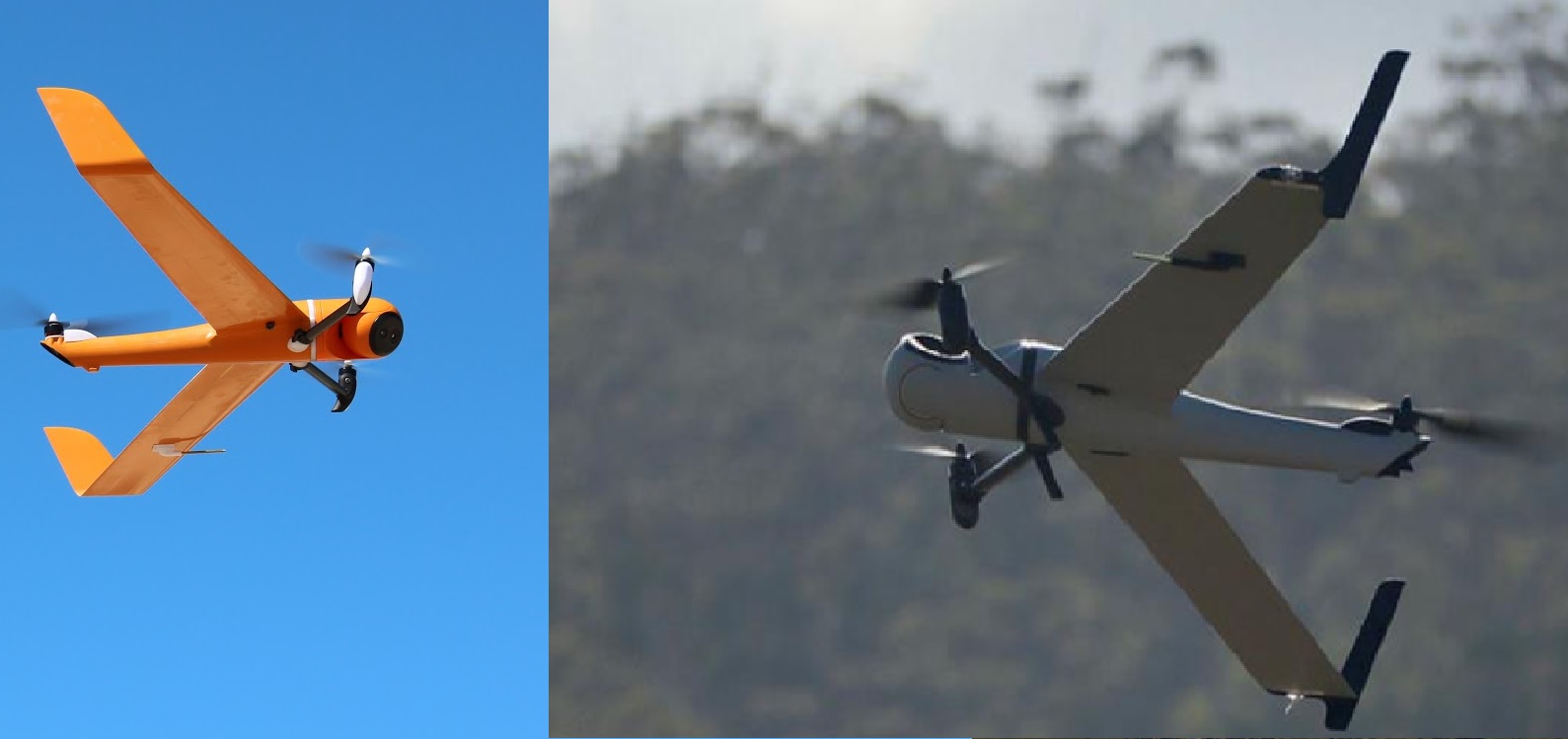
Red Cat Secures $1 Million Contract to Deliver Edge 130 Blue Tricopter Drones for US Army Operations
World
Red Cat Holdings has been awarded a $1-million contract from the Defense Logistics Agency to supply its cutting-edge Edge 130 Blue tricopter drones to the US Army. This contract signifies the growing importance of compact, efficient unmanned aerial systems (UAS) in modern military operations, particularly for enhancing the Army’s command, control, communications, cyber, intelligence, surveillance, and reconnaissance (C5ISR) capabilities.The Edge 130 Blue has been specially developed for tactical and federal government use, providing superior performance for long-range intelligence, surveillance, and reconnaissance (ISR) missions. What makes this drone a standout is its portability and versatility, allowing soldiers to quickly deploy it in complex and demanding environments. It is intended to support the Army’s Communications-Electronics Command (CECOM) in its mission to boost warfighter readiness, delivering key information from the battlefield to command centers in real-time.Edge 130 Blue: Key Features and SpecificationsWeighing just 1.2 kilograms (2.6 pounds) with a wingspan of 1.3 meters (4.2 feet), the Edge 130 Blue is incredibly easy to handle. A single operator can launch the drone in under a minute, providing immediate support in high-pressure scenarios. Its design enables it to fly autonomously for over 60 minutes, covering extensive areas while collecting crucial data. One of the most impressive features of the Edge 130 Blue is its speed. It can reach a top speed of 100 kilometers per hour (62 miles per hour), allowing it to rapidly cover ground or airspace in surveillance and reconnaissance missions. Its service ceiling reaches 3,650 meters (11,975 feet), making it suitable for high-altitude operations, whether over rugged terrain or within contested airspace.The drone’s flexibility extends to a wide range of missions, from ISR to mapping and inspection tasks, all of which are vital for military planning and operations. Its lightweight build allows it to be easily carried in the field, and its rapid deployment time means soldiers can gather critical information on enemy movements or geographical layouts without delay. The Edge 130 Blue’s endurance and speed make it a valuable asset for warfighters who need immediate situational awareness in complex combat zones.Red Cat’s Role in Army ModernizationRed Cat’s CEO, Jeff Thompson, expressed enthusiasm for the company's growing collaboration with the US Army, highlighting how essential systems like the Edge 130 Blue are to the Army’s modernization strategy. "We are committed to supporting the US Army’s transformation into a multi-domain force where small, portable unmanned aerial systems play an increasing role in conducting intelligence, maneuver, and strike activities across multiple battlefield formations,” said Thompson.In recent years, the US Army has been working to enhance its multi-domain operations, a strategy that emphasizes integrating different warfare tactics and capabilities across air, land, sea, cyber, and space domains. Red Cat’s innovative drones like the Edge 130 Blue align perfectly with this strategy by providing lightweight, efficient tools that can gather intelligence, assess risks, and even perform strike missions.Red Cat has been proactive in advancing drone technology. Earlier in 2023, the company launched a new family of surveillance and strike drones designed to be more cost-effective than traditional air defense solutions. Furthermore, Red Cat collaborated with Athena, an autonomy partner, to integrate artificial intelligence and machine learning software into the Teal 2 military drone, enhancing its autonomous capabilities.A Future-Ready Drone for Today’s Combat ChallengesAs warfare continues to evolve, the role of unmanned aerial systems like the Edge 130 Blue becomes increasingly significant. Drones provide critical support in dynamic combat situations, enabling rapid decision-making and reducing the risks to soldiers on the ground. With advanced technology, including AI-driven features, and a focus on portability and ease of use, Red Cat’s drone portfolio, including the Edge 130 Blue, is well-positioned to meet the demands of modern warfare.This contract represents another step forward for Red Cat in its mission to deliver high-performance drones to the US military. With its quick deployment time, long flight duration, and advanced reconnaissance capabilities, the Edge 130 Blue is set to play a key role in the US Army's efforts to maintain an edge on the battlefield.
Read More → Posted on 2024-10-23 13:54:10World
In a move that could mark a significant shift in its foreign policy, South Korea is considering the possibility of supplying weapons to Ukraine. This comes after allegations surfaced that North Korea has sent troops to Russia to aid in its military efforts against Ukraine. These reports, if accurate, represent a major escalation of the already tense geopolitical dynamics in the region and have prompted serious concerns in South Korea about its own security.Escalating Tensions and Fears of Technological TransfersSouth Korean officials have expressed deep concerns that Russia may reciprocate North Korea’s troop deployment by sharing advanced weapons technologies, potentially enhancing North Korea’s missile and nuclear capabilities. This, in turn, could intensify the already volatile security landscape in the Korean Peninsula. Russia's collaboration with North Korea could further strengthen Pyongyang's ability to threaten South Korea and its allies.The growing military cooperation between North Korea and Russia has not gone unnoticed in Seoul. The South Korean government has been closely monitoring developments and, in response, held an emergency meeting of its National Security Council (NSC). During the meeting, South Korean leaders condemned North Korea’s alleged actions, describing the North as a "criminal group" that forces its youth into fighting in a war that South Korea deems unjustifiable. These strong words underscore the deep anxiety felt in Seoul about the evolving situation.South Korea’s Potential ResponseSouth Korea is reportedly exploring various countermeasures, including both diplomatic and military actions. One of the most significant steps under consideration is the potential supply of weapons to Ukraine. While South Korea has so far refrained from providing lethal aid to Ukraine, viewing it as a sensitive issue given its own security concerns, the alleged involvement of North Korean forces in the Russia-Ukraine conflict could change that calculus.According to sources within President Yoon Suk-yeol's administration, South Korea is considering a phased approach. Initially, the country may provide defensive weapons, but if the situation continues to worsen, it could escalate its support to include offensive arms as well. This decision would represent a major policy shift for South Korea, which has traditionally maintained a cautious stance in global conflicts due to its proximity to North Korea and its dependence on strong security alliances with the U.S. and NATO.A senior South Korean official emphasized that the country would take a "step-by-step" approach, adjusting its actions based on how far North Korea and Russia advance their military cooperation. The official noted that if Russia and North Korea appear to be crossing certain red lines, South Korea would not hesitate to consider more direct involvement, including the provision of offensive weaponry to Ukraine.Increasing Military Cooperation Between North Korea and RussiaThe military cooperation between North Korea and Russia has intensified over the past two years. In June, the two countries signed a defense pact, pledging mutual military assistance if either were attacked. This alliance has raised alarms in Seoul and across the broader international community. According to South Korean intelligence reports, North Korea has already sent over 1,500 special operation forces to Russia as of October 2024, along with more than 13,000 containers filled with artillery, missiles, and other arms since August 2023.The alleged deployment of North Korean troops to support Russia’s war in Ukraine would mark a dramatic new chapter in this military alliance, raising the stakes for South Korea. The Yoon administration’s concerns are not only focused on immediate military threats but also on the longer-term risk that Russia might supply North Korea with advanced technologies that could enhance its nuclear weapons program.Denials and International ReactionsBoth North Korea and Russia have denied the allegations regarding troop deployments. During a U.N. Security Council meeting, Russia’s U.N. Ambassador, Vassily Nebenzia, dismissed South Korea’s claims as fearmongering, accusing the West of creating false narratives involving North Korea, Iran, and China to serve their own geopolitical interests. Similarly, a North Korean diplomat described the reports as "groundless rumors," asserting that the cooperation between Russia and North Korea is legitimate and not as sinister as portrayed.Despite the denials, South Korea remains deeply suspicious. U.S. and NATO officials have expressed concern but have not yet confirmed the reports of North Korean troop movements. U.S. Deputy Ambassador to the U.N. Robert Wood described the potential involvement of North Korean forces as a “dangerous and highly concerning development.” He added that Washington is consulting closely with its allies, including South Korea, to determine the appropriate response.The Implications for South Korea’s Foreign PolicySouth Korea’s consideration of arms support for Ukraine would represent a bold departure from its previous policy of restraint. If the allegations about North Korean troop involvement in Russia's war efforts are confirmed, it could mark a new era in the security dynamics of the Korean Peninsula, with South Korea taking a more proactive role in global conflicts beyond its immediate neighborhood.The situation remains fluid, and as South Korea continues to evaluate its options, its response to the growing military cooperation between North Korea and Russia will likely have far-reaching consequences for both regional and international security.This potential shift highlights how interconnected global conflicts have become and underscores the importance of strategic decisions made by countries like South Korea in shaping the future of international alliances and adversaries.
Read More → Posted on 2024-10-22 16:34:50World
Israel's defense innovation continues to push boundaries with SpearUAV’s latest unveiling of the Viper I, an advanced drone interceptor designed specifically to counter the rising threat of top-attack munitions and strike drones. This new loitering munition is part of SpearUAV’s Viper family and is engineered to offer critical protection to ground forces, armored vehicles, and strategic installations from various aerial threats.At the core of the Viper I’s design is its versatility. Built with a modular approach, the Viper I can be equipped with third-party sensors and warheads, ensuring that it adapts to specific operational needs. Whether it's a precision strike or the neutralization of loitering munitions, this adaptability gives military forces the upper hand in detecting, verifying, and destroying potential threats before they cause harm.Advanced AI and High-Speed Target TrackingWhat sets the Viper I apart from traditional interceptors is its advanced artificial intelligence (AI) capability. The integrated AI allows the Viper I to autonomously track and follow moving targets at high speeds. This feature is crucial in modern battlefields, where drone swarms or high-speed munitions can appear with little warning. The AI doesn’t just enhance tracking but also optimizes decision-making in real-time, giving military operators more effective control over defensive actions.Viper I’s Multi Canister LauncherThe Viper I is launched from SpearUAV’s Multi Canister Launcher, a robust system designed for flexibility in deployment. This launcher system enables rapid firing of the Viper I from various platforms—whether they’re mounted on tactical vehicles, fixed installations, or even operated by dismounted infantry. The launcher’s modularity allows it to be customized to different configurations, ranging from a single canister to multiple units, providing operators with a scalable solution depending on the mission at hand.One of the standout features of the launcher is its ability to deploy munitions even from moving platforms. This feature is vital for fast-moving convoys or mobile infantry units that cannot afford to stop during engagements. Despite the flexibility, the system maintains a small footprint, addressing common concerns regarding size, weight, and power requirements in mobile military operations.Integration with Modern Battlefield SystemsAnother critical aspect of the Viper I’s design is its seamless integration with C4I (Command, Control, Communications, Computers, and Intelligence) battle management systems. This integration gives operators a comprehensive view of the battlefield, aiding in reconnaissance, target acquisition, and surveillance. The Viper I is not just a reactive system but also contributes to proactive defense strategies by enhancing situational awareness and improving decision-making in real-time combat environments.SpearUAV's Vision and CommitmentYiftach Kleinman, SpearUAV’s Executive Vice President of Commercial, emphasized the company’s commitment to utilizing cutting-edge Israeli technology to enhance the capabilities and survivability of warfighters. He stated, "VIPER I exemplifies our commitment to delivering effective encapsulated solutions that meet the evolving challenges faced by maneuvering forces." This statement aligns with the company's broader vision of providing military forces with the tools they need to meet the increasingly sophisticated threats in today’s combat scenarios.ConclusionSpearUAV’s Viper I represents a new era in drone interceptors, blending modular design with AI-driven technology. Its ability to neutralize a wide array of aerial threats, coupled with the rapid deployment capabilities of the Multi Canister Launcher, makes it a highly versatile and effective defense tool for modern military forces. Whether protecting high-value installations or enhancing the survivability of mobile units, the Viper I is set to play a pivotal role in future conflict zones.
Read More → Posted on 2024-10-22 16:09:36World
Lockheed Martin is ramping up the production of two of its most advanced long-range missile systems—the AGM-158B Joint Air-to-Surface Standoff Missile (JASSM) and the AGM-158C Long Range Anti-Ship Missile (LRASM). In a contract awarded on October 14, 2024, the defense giant announced plans to increase the production capacity of these crucial missile systems. The contract falls under the U.S. Department of Defense’s Large Lot Procurement pilot program, which aims to bolster the nation's defense posture and that of its allies by ensuring a steady and enhanced supply of critical munitions.Lockheed Martin’s collaboration with the U.S. government on these missiles spans over two decades, delivering high-precision, long-range cruise missiles that have become essential in modern warfare. Dave Berganini, Vice President of Hypersonic and Strike Systems at Lockheed Martin Missiles and Fire Control, emphasized the importance of the contract, stating that it will enable the company to accelerate the delivery of these cutting-edge security solutions at the scale required to counter and, if necessary, defend against adversarial threats.The JASSM and LRASM are key components of the U.S. military's arsenal, offering both air-to-surface and anti-ship capabilities. The JASSM, with its advanced stealth features, is designed for precision strikes on high-value, well-defended targets. It has an operational range of over 370 kilometers (about 230 miles), making it a versatile option for the U.S. Air Force, which can deploy it from various aircraft platforms, including the B-1B Lancer, F-16, F-15E, and the F-35 fighter jets.On the other hand, the LRASM, which is tailored specifically for maritime combat, provides an effective deterrent against enemy naval forces. Developed in response to the increasing threat posed by hostile ships and anti-access/area-denial strategies, LRASM has a range exceeding 560 kilometers (350 miles), allowing the U.S. Navy and Air Force to strike ships from beyond their defensive range. Its autonomous targeting system and survivability features make it a formidable asset in modern naval warfare.The increased production of these missiles is essential to meet growing global security demands. The world has seen a steady increase in tensions, particularly in regions such as the Indo-Pacific, where U.S. allies are seeking advanced defense solutions to counter potential threats. By ramping up production, Lockheed Martin aims to provide the U.S. and its allies with an enhanced capacity to respond quickly and effectively in any conflict scenario.Lockheed Martin has already been preparing for this production surge. In 2022, the company expanded its manufacturing capabilities by adding a 225,000-square-foot intelligent factory to its existing production facilities. This new plant is equipped with advanced technology, including a fully robotic paint line and highly automated processes that ensure efficiency and precision. The facility also features factory model forecasting, allowing for more agile adjustments to meet fluctuating demands. This investment is critical in enabling the faster delivery of the JASSM and LRASM missiles.Both missile systems play a pivotal role in deterring adversaries through their lethal capabilities and long-range precision. The JASSM, particularly in its extended-range (JASSM-ER) variant, can reach over 925 kilometers (575 miles), providing the U.S. Air Force with a stand-off weapon that can neutralize high-value targets without exposing pilots to enemy air defenses. Similarly, the LRASM's stealthy design and sophisticated onboard sensors allow it to operate in highly contested environments, making it ideal for countering heavily defended maritime targets.The ongoing expansion in production is not just about meeting current demands; it is a forward-looking measure aimed at strengthening the defense industrial base. Lockheed Martin’s partnership with the U.S. government ensures that production lines can be rapidly scaled, providing the flexibility needed to respond to any future conflicts or crises.In summary, the ramp-up in JASSM and LRASM production marks a significant step in reinforcing the United States’ military capabilities. As global tensions rise, Lockheed Martin’s investment in advanced manufacturing processes and its commitment to delivering critical munitions ensures that the U.S. and its allies are well-equipped to deter and, if necessary, defend against any emerging threats. This move highlights the ongoing importance of multi-year procurement programs that provide stability and resilience to the defense industry, ensuring that America remains prepared for the challenges ahead.
Read More → Posted on 2024-10-22 16:06:47World
Raytheon, a leading subsidiary of RTX, has marked a significant achievement by transitioning to full-rate production for its Standard Missile-3 (SM-3) Block IIA interceptors. This production milestone comes at a critical time, as global demand for advanced missile defense systems continues to rise, particularly from the United States and allied nations like Japan. The SM-3 Block IIA has now reached a level of design maturity that confirms its performance and reliability, with no further concerns regarding design or manufacturing risks.This step into full-rate production follows a substantial $1.9 billion contract awarded in July 2024 by the U.S. Missile Defense Agency (MDA). The contract covers the procurement of additional SM-3 Block IIA interceptors, with orders intended for both the U.S. and Japan's Ministry of Defense. The shift to full-rate manufacturing is not just a technical milestone but also a sign of confidence in the missile’s operational effectiveness, reinforcing its position as a key component of missile defense systems for years to come.The SM-3 Block IIA is the result of a collaborative effort between the U.S. Missile Defense Agency, Japan's Ministry of Defense, and their industrial partners. This missile represents a technological leap in missile defense, featuring larger rocket motors and an upgraded kinetic warhead. These improvements give the SM-3 Block IIA the ability to intercept and neutralize ballistic missile threats with greater speed and over a larger geographical area than previous iterations of the SM-3 family.Designed to defend against short- to intermediate-range ballistic missiles, the SM-3 Block IIA enhances protection not only for the United States but also for its allies, particularly Japan. Its advanced capabilities make it an indispensable asset in the layered missile defense strategy, providing a critical shield against evolving global threats. Barbara Borgonovi, president of Naval Power at Raytheon, highlighted the importance of this milestone, stating that it reflects the continuing partnership with Japan and the overall maturation of missile defense technologies.What sets the SM-3 Block IIA apart is its adaptability and the scale of its development. It is the first missile defense program of its kind to reach full-rate production status, underlining the maturity of its design. The larger rocket motors allow for faster responses to missile threats, while the enhanced kinetic warhead ensures more precise destruction of ballistic targets. These advancements are pivotal as nations seek to bolster their defense capabilities against increasingly sophisticated missile threats.Raytheon’s production facilities in Tucson, Arizona, and Huntsville, Alabama, will be the hubs for manufacturing these cutting-edge interceptors. The company expects to continue production through February 2031, underscoring the long-term commitment to building and deploying these defense systems.The SM-3 Block IIA program also symbolizes a new era of cooperation between the United States and Japan. By sharing technology, expertise, and production responsibilities, the two nations have developed a missile defense system that is not only capable of defending their own territories but also contributes to the security of allied nations worldwide. This partnership has been instrumental in bringing the SM-3 Block IIA to full operational status, making it a cornerstone of modern missile defense.As the global landscape of missile threats continues to evolve, the SM-3 Block IIA stands as a powerful testament to international cooperation in defense technology. Its transition to full-rate production ensures that it will remain a crucial part of missile defense strategies for decades to come, offering an expanded range of protection and increased efficiency in neutralizing threats. With the full backing of the U.S. and Japanese defense agencies, the SM-3 Block IIA is poised to be a game-changer in global security.
Read More → Posted on 2024-10-22 16:03:46Search
Top Trending
-
 Agneepath Scheme replaced with Sainik Samman Scheme 2024, Defence Minister Rajnath Singh Relaunched Agniveer Scheme
Agneepath Scheme replaced with Sainik Samman Scheme 2024, Defence Minister Rajnath Singh Relaunched Agniveer Scheme
-
 China's Latest DF-31AG ICBM Test: A Strategic Leap in Global Missile Capabilities
China's Latest DF-31AG ICBM Test: A Strategic Leap in Global Missile Capabilities
-
 Pakistan Announces 15% Increase in Defence Budget for 2024-25 Amid Economic Crisis
Pakistan Announces 15% Increase in Defence Budget for 2024-25 Amid Economic Crisis
-
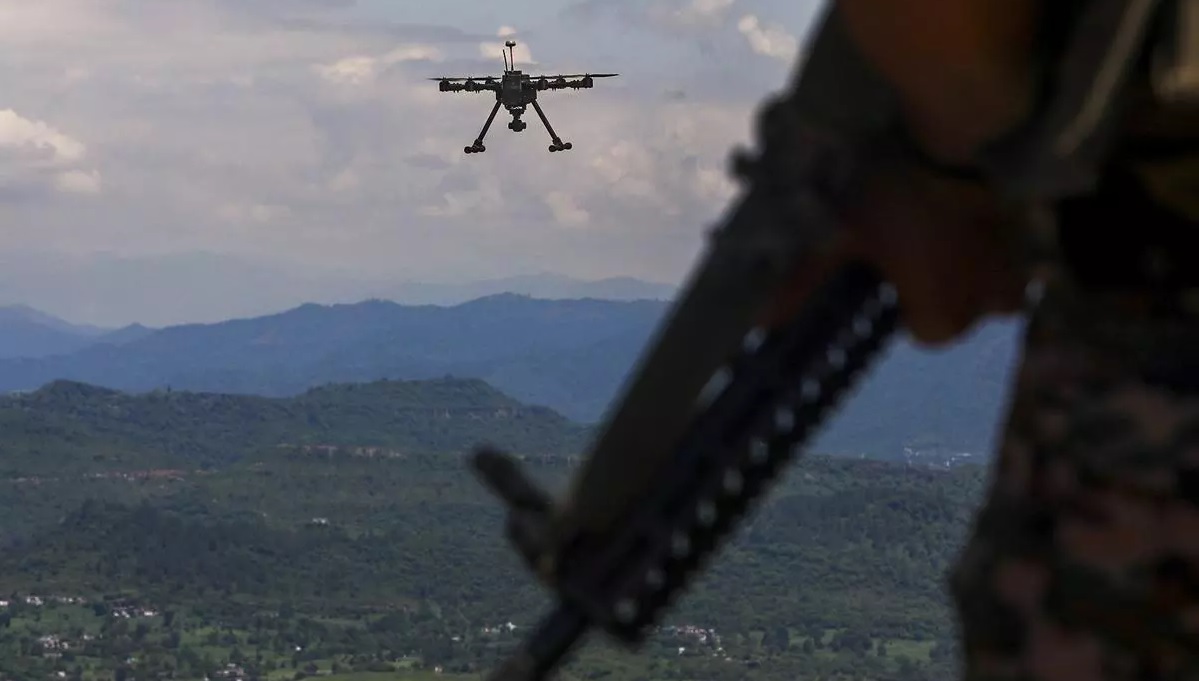 India's Defence Ministry Warns Against Chinese Parts in Military Drones Amid Security Concerns
India's Defence Ministry Warns Against Chinese Parts in Military Drones Amid Security Concerns
-
 China’s Super Radar Detects Mysterious Plasma Bubble Over Giza Pyramids
China’s Super Radar Detects Mysterious Plasma Bubble Over Giza Pyramids
-
 India's Indigenous Kaveri Engine Program with New Focus on Thrust and Performance
India's Indigenous Kaveri Engine Program with New Focus on Thrust and Performance
-
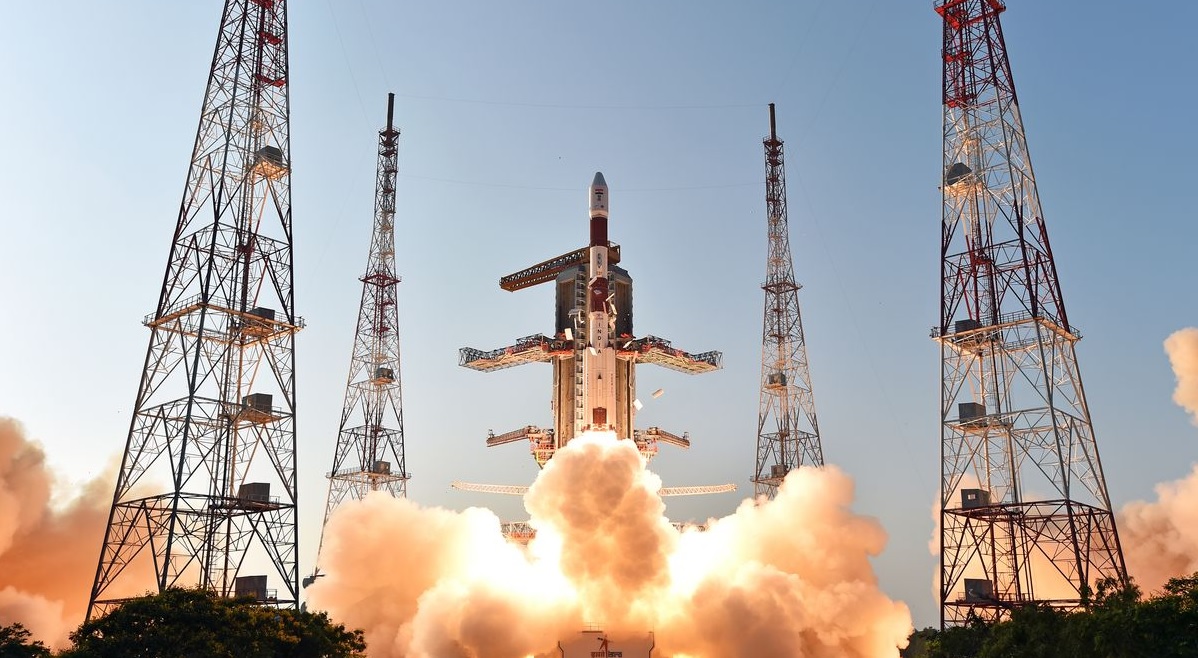 Isro Draws up Ambitious Plan for 2024, says will Launch at Least 12 Missions
Isro Draws up Ambitious Plan for 2024, says will Launch at Least 12 Missions
-
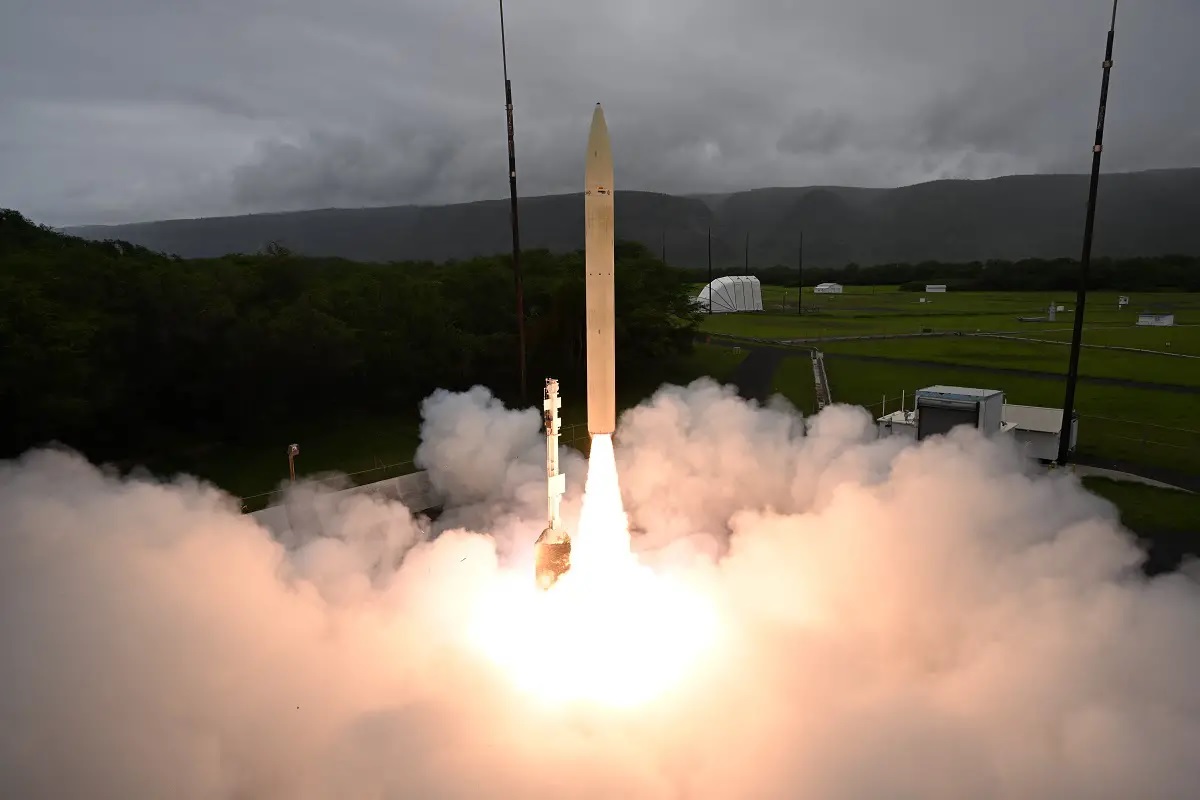 Successful Hypersonic Missile Test by U.S. Department of Defense
Successful Hypersonic Missile Test by U.S. Department of Defense
Top Trending in 4 Days
-
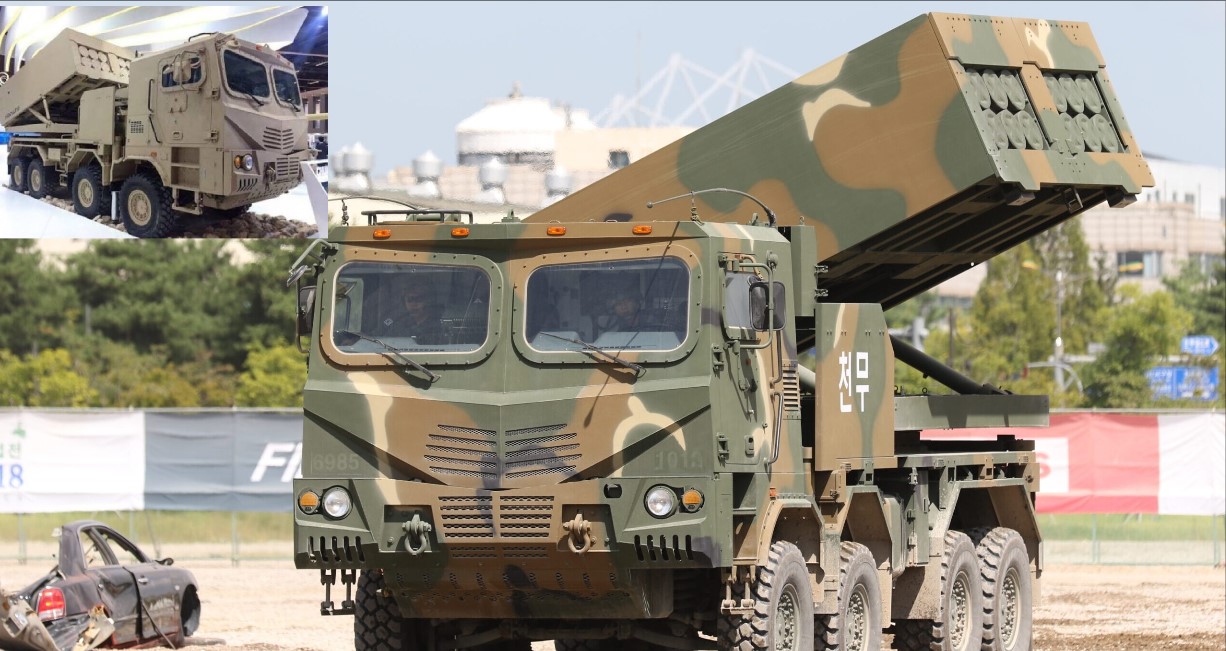 South Korea’s K239 Chunmoo Rocket Artillery Spotted in Saudi Arabia
South Korea’s K239 Chunmoo Rocket Artillery Spotted in Saudi Arabia
-
 Russia Launches Massive Missile and Drone Attacks on Ukraine's infrastructure
Russia Launches Massive Missile and Drone Attacks on Ukraine's infrastructure
-
 Russia Fires Intercontinental Ballistic Missile at Ukraine
Russia Fires Intercontinental Ballistic Missile at Ukraine
-
 Peru to Acquire South Korea's K2 Black Panther Tanks
Peru to Acquire South Korea's K2 Black Panther Tanks
-
 Advancing Space Tech for Defense: ICEYE Leads Finland's F-35 Industrial Participation Program
Advancing Space Tech for Defense: ICEYE Leads Finland's F-35 Industrial Participation Program
-
 Russia Reports Interception of 44 Ukrainian Drones Including 20 over Novgorod region
Russia Reports Interception of 44 Ukrainian Drones Including 20 over Novgorod region
-
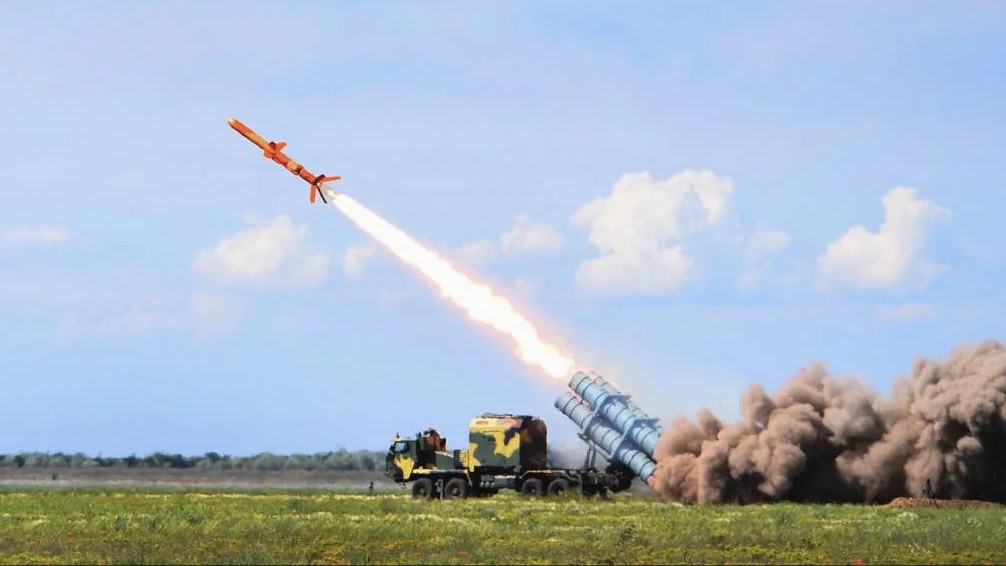 Ukraine Scales Up Neptune Missile Production: Over 100 Units Manufactured with Enhanced Range
Ukraine Scales Up Neptune Missile Production: Over 100 Units Manufactured with Enhanced Range
-
 Taiwan Strengthens Communication Resilience with LEO Satellites, Make War-Proof its communications networks
Taiwan Strengthens Communication Resilience with LEO Satellites, Make War-Proof its communications networks
